
漢德百科全書 | 汉德百科全书
 *Track and field athletics
*Track and field athletics
 4x100 m Men
4x100 m Men
 *Track and field athletics
*Track and field athletics
 4x400 m Men
4x400 m Men
 Atomic bomb
Atomic bomb
 Commonwealth of Nations
Commonwealth of Nations

 Geography
Geography
 Leichtathletik-Weltmeisterschaften
Leichtathletik-Weltmeisterschaften
 2017 London
2017 London
 Leichtathletik-Weltmeisterschaften
Leichtathletik-Weltmeisterschaften
 1997 Athens
1997 Athens
 Leichtathletik-Weltmeisterschaften
Leichtathletik-Weltmeisterschaften
 1991 Tokyo
1991 Tokyo

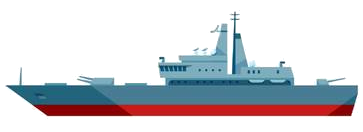
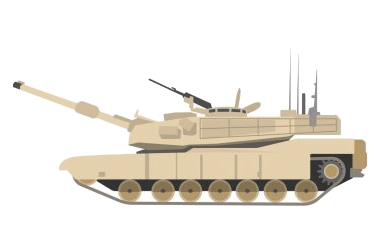
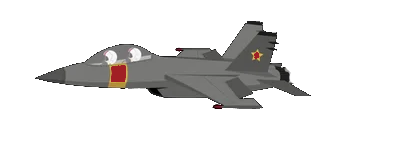
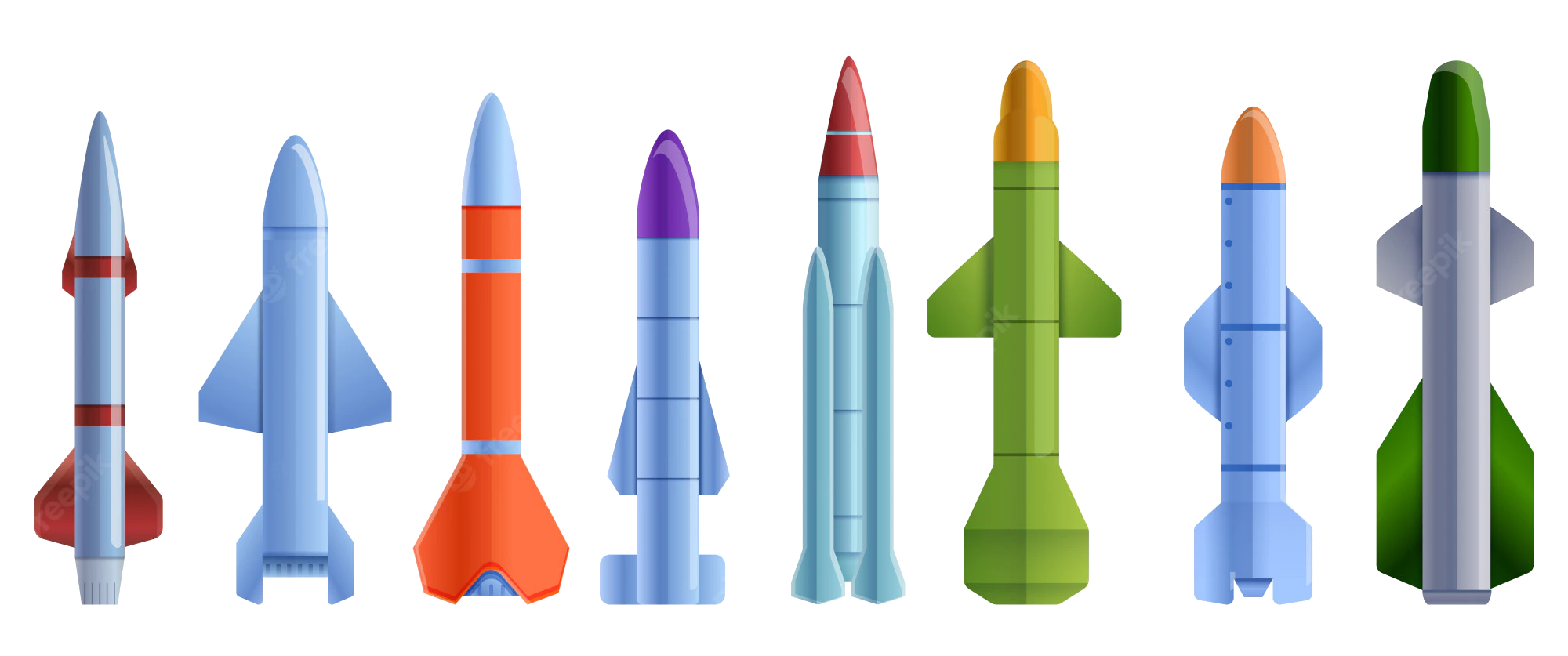 Military, defense and equipment
Military, defense and equipment
 Nuclear Weapon
Nuclear Weapon

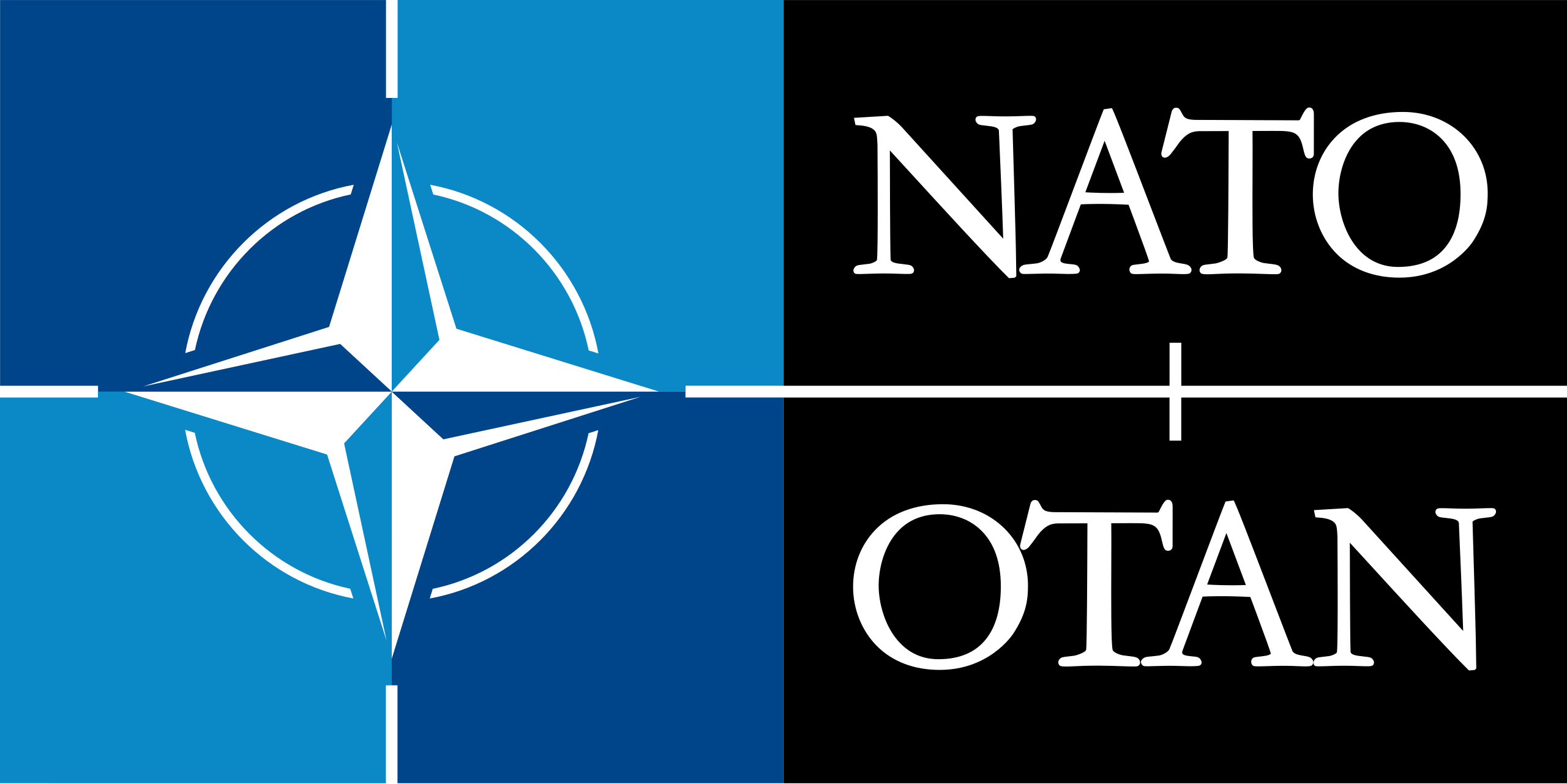 Mitglieder der NATO
Mitglieder der NATO

 Party and government
Party and government
 Group of the twenty most important industrial and emerging countries
Group of the twenty most important industrial and emerging countries

 Party and government
Party and government
 Group of Seven,G7
Group of Seven,G7

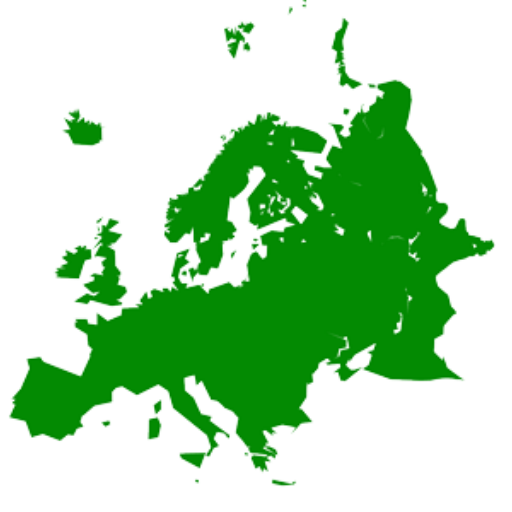 States of Europe
States of Europe

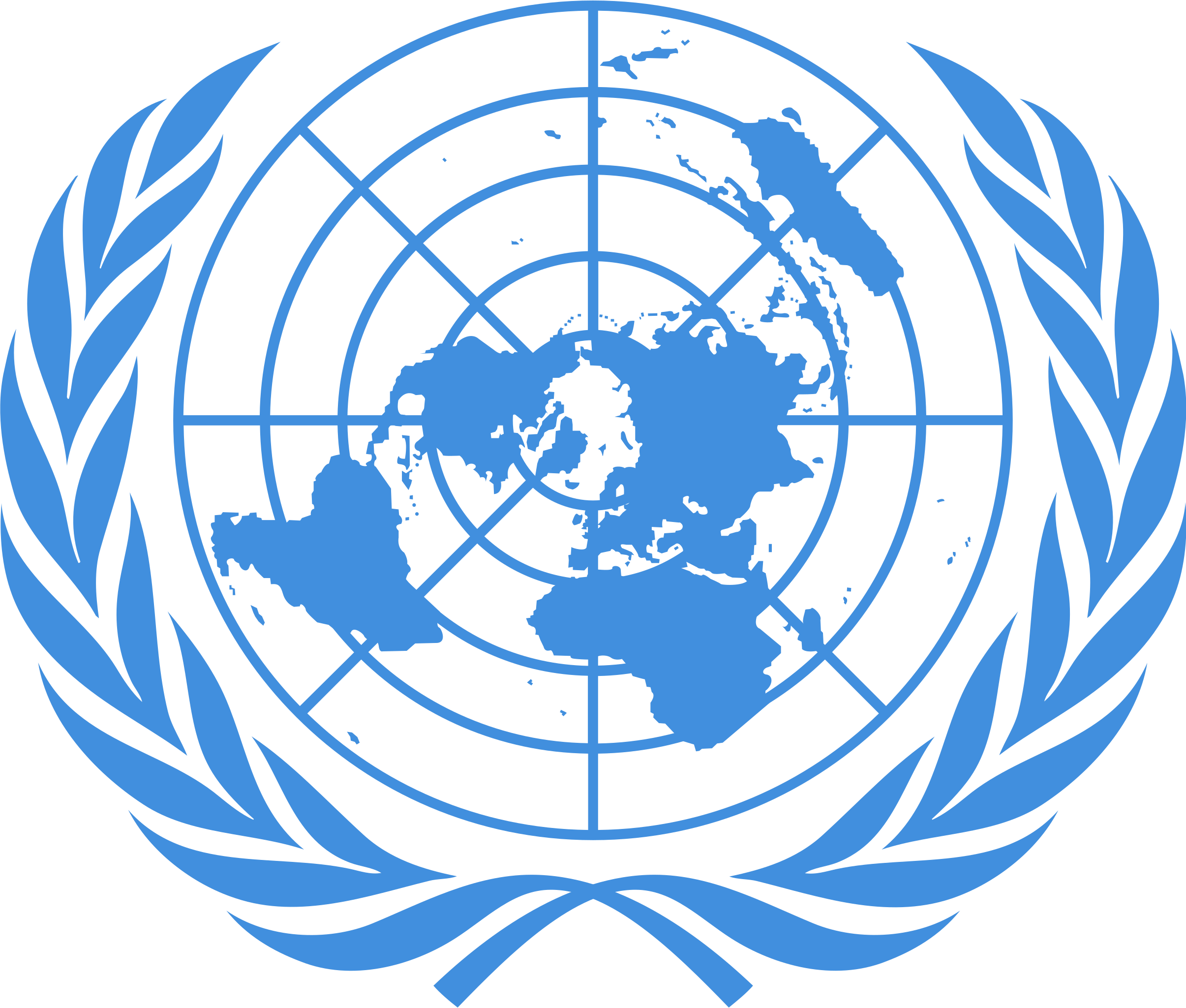 United Nations
United Nations
 United Nations Security Council
United Nations Security Council
 Hydrogen bomb
Hydrogen bomb

 Science and technology
Science and technology

 Science and technology
Science and technology
 The first industrial revolution and its leaders and followers
The first industrial revolution and its leaders and followers



Das Vereinigte Königreich von Großbritannien und Nordirland (englisch ), kurz Vereinigtes Königreich (englisch [juːˌnaɪ̯.tʰɪd ˈkʰɪŋ.dəm], internationale Abkürzung: UK oder GB), ist ein auf den Britischen Inseln vor der Nordwestküste Kontinentaleuropas gelegener europäischer Staat und bildet den größten Inselstaat Europas.
Das Vereinigte Königreich ist eine Union aus den vier Landesteilen England, Wales, Schottland und Nordirland. Im täglichen Sprachgebrauch wird es auch schlicht als Großbritannien oder England bezeichnet. Jedoch stellt England in der eigentlichen Bedeutung nur den größten Landesteil dar, während Großbritannien die Hauptinsel der Britischen Inseln mit den Landesteilen England, Schottland und Wales bezeichnet.
Mit rund 66,4 Millionen Einwohnern[6] steht das Vereinigte Königreich unter den bevölkerungsreichsten Staaten Europas nach Russland und Deutschland an dritter Stelle. Es ist Gründungsmitglied der NATO sowie der Vereinten Nationen. Es ist Atommacht, ständiges Mitglied des UN-Sicherheitsrates und einer der G7-Staaten. Von 1973 bis 2020 war es Mitglied der EWG bzw. später der Europäischen Union.
大不列颠及北爱尔兰联合王国(英语:United Kingdom of Great Britain and Northern Ireland),国际间的标准简称为联合王国(英语:United Kingdom,缩写作UK)或者不列颠(英语:Britain),汉字文化圈通称“英国”[注 5][9][10](中文早期亦称“英联王国”[注 6]),是本土位于西欧并具有海外领地[注 7]的主权国家。英国位于欧洲大陆西北面,由大不列颠岛、爱尔兰岛东北部分及一系列较小岛屿组成[11]。英国和另一国家唯一的陆上国境线位于北爱尔兰,和爱尔兰共和国相邻[注 8]。英国由大西洋所环绕,东为北海,南为英吉利海峡,西南偏南为凯尔特海,与爱尔兰隔爱尔兰海相望。该国总面积达243,610平方千米(94,060平方英里),为世界面积第80大的主权国家及欧洲面积第11大的主权国家,人口约6636万,为全球第21名及欧洲第3名。
英国为君主立宪制国家,采用议会制进行管辖[12][13]。其首都伦敦为全球城市A++级别城市和国际金融中心,大都会区人口达1380万,为欧洲第三大[14]。现任英国君主为女王伊丽莎白二世,1952年2月6日即位。英国由四个构成国组成,分别为英格兰、苏格兰、威尔士和北爱尔兰[15],其中后三者在权力下放体系之下,各自拥有一定的权力[16][17][18]。三地首府分别为爱丁堡、加的夫和贝尔法斯特。附近的马恩岛、根西行政区及泽西行政区并非联合王国的一部分,而为皇家属地,英国政府负责其国防及外交事务[19]。
英国的构成国之间的关系在历史上经历了一系列的发展。英格兰王国通过1535年和1542年的联合法令将威尔士纳入领土。1707年联合法令使英格兰王国和苏格兰王国共组大不列颠王国,1801年大不列颠王国和爱尔兰王国共组大不列颠及爱尔兰联合王国。1922年爱尔兰中南部26个郡(面积占整个爱尔兰的约六分之五)脱离英国组成爱尔兰自由邦(当今爱尔兰的前身),最终造就了当今的大不列颠及北爱尔兰联合王国[注 9]。大不列颠及北爱尔兰联合王国亦有14块海外领地[20],为往日帝国的遗留部分。大英帝国在1921年达到其巅峰,拥有全球22%的领土,是有史以来面积最大的帝国。英国在语言、文化和法律体系上对其前殖民地保留了一定的影响,因而吸引许多以前英联邦的移民前来居住。
英国为发达国家,以名义GDP为量度是世界第五大经济体,以购买力平价为量度是世界第九大经济体。英国是世界首个工业化国家,工业革命使英国人的生产力大大提高,商业与财富极大的增长,更凭借著工业时代的船坚炮利,1763年—1945年英国为世界第一强国,其鼎盛时期的19世纪还被称作英国的世纪[21][22],当今英国仍是世界强国之一,在经济、文化、军事、科技、教育和政治上均有全球性的显著影响力[23][24]。英国为国际公认的有核国家,其军事开支位列全球第五[25][26]。1945年以来英国即为联合国安全理事会常任理事国。1973年—2020年英国是欧洲联盟(EU)及其前身欧洲经济共同体(EEC)的成员国。英国还是英联邦、欧洲委员会、七国财长峰会、七国集团、二十国集团、北大西洋公约组织、经济合作与发展组织和世界贸易组织成员国。
グレートブリテン及び北アイルランド連合王国(グレートブリテンおよびきたアイルランドれんごうおうこく、英: United Kingdom of Great Britain and Northern Ireland: UK)は、ヨーロッパ大陸の北西岸に位置し、グレートブリテン島・アイルランド島北東部・その他多くの島々から成る立憲君主制国家。首都はロンドン。日本語における通称の一例としてイギリス、英国(えいこく)がある(→#国名)。
イングランド、ウェールズ、スコットランド、北アイルランドという歴史的経緯に基づく4つの「カントリー(国)」が、同君連合型の単一の主権国家を形成している[1]。しかし、政治制度上は単一国家の代表的なモデルであり、連邦国家ではない。
国際連合安全保障理事会常任理事国の一国(五大国)であり、G7・G20に参加する。GDPは世界10位以内に位置する巨大な市場を持ち、ヨーロッパにおける四つの大国「ビッグ4」の一国である。ウィーン体制が成立した1815年以来、世界で最も影響力のある国家を指す列強の一つに数えられる。また、民主主義、立憲君主制など近代国家の基本的な諸制度が発祥した国でもある。
イギリスの擬人化としてはジョン・ブル、ブリタニアが知られる。
The United Kingdom of Great Britain and Northern Ireland, commonly known as the United Kingdom (UK or U.K.)[14] or Britain,[note 10] is a sovereign country located off the northwestern coast of the European mainland. The United Kingdom includes the island of Great Britain, the northeastern part of the island of Ireland, and many smaller islands.[15] Northern Ireland shares a land border with the Republic of Ireland. Otherwise, the United Kingdom is surrounded by the Atlantic Ocean, with the North Sea to the east, the English Channel to the south and the Celtic Sea to the southwest, giving it the 12th-longest coastline in the world. The Irish Sea separates Great Britain and Ireland. The total area of the United Kingdom is 94,000 square miles (240,000 km2).
The United Kingdom is a unitary parliamentary democracy and constitutional monarchy.[note 11][16][17] The monarch is Queen Elizabeth II, who has reigned since 1952, making her the world's longest-serving current head of state.[18] The United Kingdom's capital is London, a global city and financial centre with an urban area population of 10.3 million.[19]
The United Kingdom consists of four countries: England, Scotland, Wales and Northern Ireland.[20] Their capitals are London, Edinburgh, Cardiff and Belfast, respectively. Apart from England, the countries have their own devolved governments,[21] each with varying powers.[22][23] Other major cities include Birmingham, Glasgow, Leeds, Liverpool, and Manchester.
The nearby Isle of Man, Bailiwick of Guernsey and Bailiwick of Jersey are not part of the UK, being Crown dependencies with the British Government responsible for defence and international representation.[24] The medieval conquest and subsequent annexation of Wales by the Kingdom of England, followed by the union between England and Scotland in 1707 to form the Kingdom of Great Britain, and the union in 1801 of Great Britain with the Kingdom of Ireland created the United Kingdom of Great Britain and Ireland. Five-sixths of Ireland seceded from the UK in 1922, leaving the present formulation of the United Kingdom of Great Britain and Northern Ireland. The UK's name was adopted in 1927 to reflect the change.[note 12] There are fourteen British Overseas Territories,[25] the remnants of the British Empire which, at its height in the 1920s, encompassed almost a quarter of the world's landmass and was the largest empire in history. British influence can be observed in the language, culture and political systems of many of its former colonies.[26][27][28][29][30] The United Kingdom has the world's sixth-largest economy by nominal gross domestic product (GDP), and the ninth-largest by purchasing power parity (PPP). It has a high-income economy and a very high human development index rating, ranking 14th in the world. It was the world's first industrialised country and the world's foremost power during the 19th and early 20th centuries.[31][32] The UK remains a great power, with considerable economic, cultural, military, scientific and political influence internationally.[33][34] It is a recognised nuclear weapons state and is sixth in military expenditure in the world.[35] It has been a permanent member of the United Nations Security Council since its first session in 1946.
The United Kingdom is a leading member of the Commonwealth of Nations, the Council of Europe, the G7, the G20, NATO, the Organisation for Economic Co-operation and Development (OECD), Interpol and the World Trade Organization (WTO). It was a member of the European Union (EU) and its predecessor, the European Economic Community (EEC), for 47 years, between 1 January 1973 and withdrawal on 31 January 2020.
Le Royaume-Uni (prononcé en français : /ʁwajom‿yni/a Écouter), en forme longue le Royaume-Uni de Grande-Bretagne et d'Irlande du Nordb (en anglais : United Kingdom /juːˌnaɪtɪd ˈkɪŋdəm/c Écouter et United Kingdom of Great Britain and Northern Ireland)d, est un pays d'Europe de l'Ouest, ou selon certaines définitions, d'Europe du Nord, dont le territoire comprend l'île de Grande-Bretagne et la partie nord de l'île d'Irlande, ainsi que de nombreuses petites îles autour de l'archipel. Le territoire du Royaume-Uni partage une frontière terrestre avec la république d'Irlande, et est entouré par l'océan Atlantique au nord, la mer du Nord à l'est, la Manche au sud, la mer Celtique au sud-sud-ouest, la mer d'Irlande au sud-ouest et les mers intérieures de la côte ouest de l'Écosse au nord-ouest. Le Royaume-Uni couvre une superficie de 246 690 km2, faisant de lui le 80e plus grand pays du monde, et le 11e d'Europe. Il est le 22e pays plus peuplé du monde, avec une population estimée à 65,1 millions d'habitants. Le Royaume-Uni est une monarchie constitutionnelle7 ; il possède un système parlementaire de gouvernance8,3. Sa capitale est Londres, une ville mondiale et la première place financière au monde.
Le Royaume-Uni est composé de quatre nations constitutives : l'Angleterre, l'Écosse, le pays de Galles et l'Irlande du Nord. Les trois dernières ont des administrations dévolues9, chacune avec des pouvoirs variés10, basés dans leurs capitales régionales, respectivement Édimbourg, Cardiff et Belfast. Les bailliages de Guernesey, de Jersey et l'île de Man sont des dépendances de la Couronne et ne sont donc pas rattachés au pays11. De plus, le pays comprend quatorze territoires d'outre-mer12, disséminés sur plusieurs océans. Le Royaume-Uni est né en 1707, lorsque les royaumes d'Angleterre et d'Écosse s'unifièrent pour former le royaume de Grande-Bretagne, qui s'agrandit en 1801 en s'unifiant avec le royaume d'Irlande pour former le Royaume-Uni de Grande-Bretagne et d'Irlande. En 1922, l'Irlande du Sud fit sécession du Royaume-Uni, donnant naissance à l'État d'Irlande, amenant au nom officiel et actuel de « Royaume-Uni de Grande-Bretagne et d'Irlande du Nord ». Les territoires d'outre-mer, anciennement des colonies, sont les vestiges de l'Empire britannique, qui, jusqu'à la seconde moitié du XXe siècle, était le plus vaste empire colonial de l'histoire.
L'influence britannique peut être observée dans la langue, la culture, le système politique et juridique des anciennes colonies. Le Royaume-Uni est un pays développé. Il est en 2018 la cinquième puissance mondiale par son PIB nominal13 et la neuvième puissance en termes de PIB à parité de pouvoir d'achat. Berceau de la révolution industrielle, le pays fut la première puissance mondiale durant la majeure partie du XIXe siècle14,15. Le Royaume-Uni reste une grande puissance, avec une influence internationale considérable sur le plan économique, politique, culturel, militaire et scientifique16,17. Il est également une puissance nucléaire reconnue avec le sixième budget de la défense le plus élevé18. Le Royaume-Uni est membre du Commonwealth, du Conseil de l'Europe, du G7, du G20, de l'OTAN, de l'OCDE, de l'OMC, et membre permanent du Conseil de sécurité des Nations unies depuis 1946. Le Royaume-Uni a adhéré le 1er janvier 1973 à la CEE, devenue Union Européenne, puis en est sorti le 1er février 2020 à la suite de la victoire du «
 *Track and field athletics
*Track and field athletics
 4x100 m Men
4x100 m Men
 *Track and field athletics
*Track and field athletics
 4x100 m Woman
4x100 m Woman
 *Track and field athletics
*Track and field athletics
 4x400 m Men
4x400 m Men
 Atomic bomb
Atomic bomb

 European Union
European Union
 History of the European Union
History of the European Union

 European Union
European Union
 *Founding states
*Founding states
 France
France

 Geography
Geography
 Leichtathletik-Weltmeisterschaften
Leichtathletik-Weltmeisterschaften
 2005 Helsinki
2005 Helsinki
 Leichtathletik-Weltmeisterschaften
Leichtathletik-Weltmeisterschaften
 2003 Saint-Denis
2003 Saint-Denis
 Leichtathletik-Weltmeisterschaften
Leichtathletik-Weltmeisterschaften
 2003 Saint-Denis
2003 Saint-Denis




 Military, defense and equipment
Military, defense and equipment
 Nuclear Weapon
Nuclear Weapon

 Mitglieder der NATO
Mitglieder der NATO

 Party and government
Party and government
 Group of the twenty most important industrial and emerging countries
Group of the twenty most important industrial and emerging countries

 Party and government
Party and government
 Group of Seven,G7
Group of Seven,G7

 States of Europe
States of Europe

 United Nations
United Nations
 United Nations Security Council
United Nations Security Council
 Hydrogen bomb
Hydrogen bomb

Frankreich ![]() [ˈfʁaŋkʁaɪ̯ç] (französisch [fʁɑ̃s], amtlich République française [ʁe.py.ˈblik fʁɑ̃.ˈsɛz], deutsch Französische Republik) ist ein demokratischer, interkontinentaler Einheitsstaat in Westeuropa mit Überseeinseln und -gebieten auf mehreren Kontinenten. Metropolitan-Frankreich, d. h. der europäische Teil des Staatsgebietes, erstreckt sich vom Mittelmeer bis zum Ärmelkanal und zur Nordsee sowie vom Rhein bis zum Atlantischen Ozean. Sein Festland wird wegen seiner Landesform als Hexagone (Sechseck) bezeichnet. Frankreich ist flächenmäßig das größte und nach Einwohnern (hinter Deutschland) das zweitgrößte Land der Europäischen Union. Es umfasst (nach Russland und der Ukraine) das drittgrößte Staatsgebiet in Europa. Paris ist die Hauptstadt und als Agglomeration mit dem Gemeindeverband Métropole du Grand Paris und den umliegenden Gebieten der Region Île-de-France größter Ballungsraum des Landes vor Lyon, Marseille, Toulouse und Lille.
[ˈfʁaŋkʁaɪ̯ç] (französisch [fʁɑ̃s], amtlich République française [ʁe.py.ˈblik fʁɑ̃.ˈsɛz], deutsch Französische Republik) ist ein demokratischer, interkontinentaler Einheitsstaat in Westeuropa mit Überseeinseln und -gebieten auf mehreren Kontinenten. Metropolitan-Frankreich, d. h. der europäische Teil des Staatsgebietes, erstreckt sich vom Mittelmeer bis zum Ärmelkanal und zur Nordsee sowie vom Rhein bis zum Atlantischen Ozean. Sein Festland wird wegen seiner Landesform als Hexagone (Sechseck) bezeichnet. Frankreich ist flächenmäßig das größte und nach Einwohnern (hinter Deutschland) das zweitgrößte Land der Europäischen Union. Es umfasst (nach Russland und der Ukraine) das drittgrößte Staatsgebiet in Europa. Paris ist die Hauptstadt und als Agglomeration mit dem Gemeindeverband Métropole du Grand Paris und den umliegenden Gebieten der Region Île-de-France größter Ballungsraum des Landes vor Lyon, Marseille, Toulouse und Lille.
Im 17. und 18. Jahrhundert hatte Frankreich eine europäische Führungsrolle und Vormachtstellung inne. Bedeutend war die politische und kulturelle Ausstrahlung: Die Hofhaltung Ludwigs XIV. wurde zum Vorbild absolutistischer Staaten in ganz Europa und die Französische Revolution mit der Erklärung der Menschen- und Bürgerrechte gab zusammen mit Okkupationen durch Napoleon Bonaparte in vielen Ländern den Auftakt zu der immer wieder von Rückschlägen unterbrochenen Entwicklung zur Demokratie. In Übersee baute Frankreich zweimal ein Kolonialreich auf. Das erste umfasste u. a. große Teile Nordamerikas und ging großenteils Mitte des 18. Jahrhunderts im Siebenjährigen Krieg verloren; das zweite mit Schwerpunkt in Afrika war im 19. und frühen 20. Jahrhundert das zweitgrößte der Welt. Im 21. Jahrhundert gilt Frankreich mit Deutschland als treibende Kraft der europäischen Integration.
Die Französische Republik wird in ihrer Verfassung als unteilbar, laizistisch, demokratisch und sozial erklärt.[7] Ihr Grundsatz lautet: „Regierung des Volkes durch das Volk und für das Volk“. Frankreich steht auf Rang 26 des Index der menschlichen Entwicklung (2019) der Vereinten Nationen.[8] Gemessen am nominalen Bruttoinlandsprodukt ist es die sechstgrößte Volkswirtschaft der Welt.[5] Die Kaufkraft pro Einwohner betrug 2016 19.254 Euro (zum Vergleich: Deutschland 21.879 Euro, Großbritannien 21.141 Euro).[9] Lebensstandard, Bildungsgrad und durchschnittliche Lebenserwartung[10] gelten als hoch. Als meistbesuchtes Land der Welt empfängt Frankreich rund 83 Millionen ausländische Touristen pro Jahr.[11][12]
Frankreich unterhält die drittstärksten Streitkräfte innerhalb der NATO und das größte Heer der Europäischen Union. Es ist eines der fünf ständigen Mitglieder des UN-Sicherheitsrates und hatte 2010 als Atommacht die weltweit dritthöchste Anzahl an Kernwaffen.[13] Das Land ist Gründungsmitglied der Europäischen Union und der Vereinten Nationen, Mitglied der Frankophonie, der G7, der G20, der NATO, der Organisation für wirtschaftliche Zusammenarbeit und Entwicklung (OECD), der Welthandelsorganisation (WTO) und der Lateinischen Union.
法兰西共和国(法语:République française [ʁepyblik fʁɑ̃sɛz]),通称法国(法语:France [fʁɑ̃s] ![]() 聆听),是本土位于西欧并具有海外大区及领地[注 16]的主权国家,自法兰西第五共和国建立以来实行单一制与半总统制,首都为欧洲大陆最大的文化与金融中心巴黎。该国本土由地中海一直延伸至英吉利海峡及北海,并由莱茵河一直延伸至大西洋,整体呈六角状。海外领土包括南美洲的法属圭亚那及分布于大西洋、太平洋和印度洋的诸岛屿。全国共分为18个大区,其中5个位于海外。法国与西班牙及摩洛哥为同时拥有地中海及大西洋海岸线的三个国家。法国的国土面积全球第四十一位,但却为欧盟及西欧国土面积最辽阔的国家,欧洲面积第三大国家。
聆听),是本土位于西欧并具有海外大区及领地[注 16]的主权国家,自法兰西第五共和国建立以来实行单一制与半总统制,首都为欧洲大陆最大的文化与金融中心巴黎。该国本土由地中海一直延伸至英吉利海峡及北海,并由莱茵河一直延伸至大西洋,整体呈六角状。海外领土包括南美洲的法属圭亚那及分布于大西洋、太平洋和印度洋的诸岛屿。全国共分为18个大区,其中5个位于海外。法国与西班牙及摩洛哥为同时拥有地中海及大西洋海岸线的三个国家。法国的国土面积全球第四十一位,但却为欧盟及西欧国土面积最辽阔的国家,欧洲面积第三大国家。
今日之法国本土于铁器时代由高卢人(凯尔特人的一支)征服,前51年又由罗马帝国吞并。486年法兰克人(日耳曼人的一支)又征服此地,其于该地域建立的早期国家最终发展成为法兰西王国。法国至中世纪末期起成为欧洲大国,国力于19-20世纪时达致巅峰,建立了世界第二大殖民帝国,亦为20世纪人口最稠密的国家[来源请求],现今则是众多前殖民地的首选移民国[8]。在漫长的历史中,法国培养了不少对人类发展影响深远的著名哲学家、文学家与科学家,亦为文化大国,具有第四多的世界遗产[9]。
フランス共和国(フランスきょうわこく、フランス語: République française、通称:フランス、France)は、西ヨーロッパ、カリブ、太平洋およびインド洋に位置する共和制国家。首都はパリ。
フランス・メトロポリテーヌ(本土)は地中海からイギリス海峡及び北海へ、ライン川から大西洋へと広がる。この他世界各地に海外地域および領土を有する。
なお、フランス・メトロポリテーヌ周辺は北東がドイツとベルギーとルクセンブルク、東をスイスとイタリア、南にスペインと国境を接している。
フランスは国際連合安全保障理事会常任理事国であり、G7・G20、欧州評議会、世界貿易機関、経済協力開発機構、北大西洋条約機構、パリクラブおよびフランコフォニー国際機関における主要なメンバーである。国際政治においてはこれらの理由から、政治・経済・文化において強力な影響を及ぼす列強の一角に数えられており、ヨーロッパにおける「ビッグ4」の1つでもある。
核拡散防止条約により核兵器の保有を認められた5つの公式核保有国の1つであり、その他にアメリカ合衆国を除けば世界で唯一の原子力空母「シャルル・ド・ゴール」や原子力潜水艦を保有しており、強力な軍事力を持っている。
GDPは名目GDP世界第7位かつ購買力平価で世界第10位・ユーロ圏ではドイツに次ぐ第2位の経済力を有する国であり、高い人間開発指数を持つ先進国として知られる。数多くの世界遺産を抱えており、世界で最も観光客の多い国の1つである。
歴史的にはデカルト、モンテスキュー、ルソー、サルトルといった哲学者やマリ・キュリー、パストゥールといった科学者、モネ、セザンヌ、ゴーギャン、クールベ、ドラクロワといった芸術家の故国もしくは活躍の舞台であり、また百年戦争やフランス革命、ナポレオン戦争といった歴史的事象の主要な舞台であった。
France (French: [fʁɑ̃s] ![]() ), officially the French Republic (French: République française),[1] is a transcontinental country spanning Western Europe and overseas regions and territories in the Americas and the Atlantic, Pacific and Indian Oceans.[XIII] Including all of its territories, France has twelve time zones, the most of any country. Its metropolitan area extends from the Rhine to the Atlantic Ocean and from the Mediterranean Sea to the English Channel and the North Sea; overseas territories include French Guiana in South America, Saint Pierre and Miquelon in the North Atlantic, the French West Indies, and several islands in Oceania and the Indian Ocean. Due to its several coastal territories, France has the largest exclusive economic zone in the world. France borders Belgium, Luxembourg, Germany, Switzerland, Monaco, Italy, Andorra and Spain in Europe, as well as the Netherlands, Suriname and Brazil in the Americas. Its eighteen integral regions (five of which are overseas) span a combined area of 643,801 km2 (248,573 sq mi) and over 67 million people (as of May 2021).[13] France is a unitary semi-presidential republic with its capital in Paris, the country's largest city and main cultural and commercial centre; other major urban areas include Lyon, Marseille, Toulouse, Bordeaux, Lille and Nice.
), officially the French Republic (French: République française),[1] is a transcontinental country spanning Western Europe and overseas regions and territories in the Americas and the Atlantic, Pacific and Indian Oceans.[XIII] Including all of its territories, France has twelve time zones, the most of any country. Its metropolitan area extends from the Rhine to the Atlantic Ocean and from the Mediterranean Sea to the English Channel and the North Sea; overseas territories include French Guiana in South America, Saint Pierre and Miquelon in the North Atlantic, the French West Indies, and several islands in Oceania and the Indian Ocean. Due to its several coastal territories, France has the largest exclusive economic zone in the world. France borders Belgium, Luxembourg, Germany, Switzerland, Monaco, Italy, Andorra and Spain in Europe, as well as the Netherlands, Suriname and Brazil in the Americas. Its eighteen integral regions (five of which are overseas) span a combined area of 643,801 km2 (248,573 sq mi) and over 67 million people (as of May 2021).[13] France is a unitary semi-presidential republic with its capital in Paris, the country's largest city and main cultural and commercial centre; other major urban areas include Lyon, Marseille, Toulouse, Bordeaux, Lille and Nice.
Inhabited since the Palaeolithic era, the territory of Metropolitan France was settled by Celtic tribes known as Gauls during the Iron Age. Rome annexed the area in 51 BC, leading to a distinct Gallo-Roman culture that laid the foundation of the French language. The Germanic Franks arrived in 476 and formed the Kingdom of Francia, which became the heartland of the Carolingian Empire. The Treaty of Verdun of 843 partitioned the empire, with West Francia becoming the Kingdom of France in 987.
In the High Middle Ages, France was a powerful but highly decentralised feudal kingdom in which the king's authority was barely felt. King Philip II achieved remarkable success in the strengthening of royal power and the expansion of his realm, defeating his rivals and doubling its size. By the end of his reign, the kingdom had emerged as the most powerful state in Europe. From the mid-14th to the mid-15th century, France was plunged into a series of dynastic conflicts for the French throne, collectively known as the Hundred Years' War, and a distinct French identity emerged as a result. The French Renaissance saw art and culture flourish, various wars with rival powers, and the establishment of a global colonial empire, which by the 20th century would become the second-largest in the world.[14] The second half of the 16th century was dominated by religious civil wars between Catholics and Huguenots that severely weakened the country. But France once again emerged as Europe's dominant cultural, political and military power in the 17th century under Louis XIV following the Thirty Years' War.[15] Inadequate economic policies, an inequitable taxation system as well as endless wars (notably a defeat in the Seven Years' War and costly involvement in the American War of Independence), left the kingdom in a precarious economic situation by the end of the 18th century. This precipitated the French Revolution of 1789, which overthrew the absolute monarchy, replaced the Ancien Régime with one of history's first modern republics and produced the Declaration of the Rights of Man and of the Citizen, which expresses the nation's ideals to this day.
France reached its political and military zenith in the early 19th century under Napoleon Bonaparte, subjugating much of continental Europe and establishing the First French Empire. The French Revolutionary and Napoleonic Wars shaped the course of European and world history. The collapse of the empire initiated a period of relative decline, in which France endured a tumultuous succession of governments until the founding of the French Third Republic during the Franco-Prussian War in 1870. Subsequent decades saw a period of optimism, cultural and scientific flourishing, as well as economic prosperity known as the Belle Époque. France was one of the major participants of World War I, from which it emerged victorious at great human and economic cost. It was among the Allied powers of World War II, but was soon occupied by the Axis in 1940. Following liberation in 1944, the short-lived Fourth Republic was established and later dissolved in the course of the Algerian War. The current Fifth Republic was formed in 1958 by Charles de Gaulle. Algeria and most French colonies became independent in the 1960s, with the majority retaining close economic and military ties with France.
France retains its centuries-long status as a global centre of art, science and philosophy. It hosts the fifth-largest number of UNESCO World Heritage Sites and is the world's leading tourist destination, receiving over 89 million foreign visitors in 2018.[16] France is a developed country with the world's seventh-largest economy by nominal GDP and ninth-largest by PPP; in terms of aggregate household wealth, it ranks fourth in the world.[17] France performs well in international rankings of education, health care, life expectancy and human development.[18][19] It remains a great power in global affairs,[20] being one of the five permanent members of the United Nations Security Council and an official nuclear-weapon state. France is a founding and leading member of the European Union and the Eurozone,[21] as well as a key member of the Group of Seven, North Atlantic Treaty Organization (NATO), Organisation for Economic Co-operation and Development (OECD) and La Francophonie.
La France (Écouter), en forme longue depuis 1875 la République française (Écouter), est un État souverain transcontinental dont le territoire métropolitain est situé en Europe de l'Ouest et dont le territoire ultramarin est situé dans les océans Indien, Atlantique et Pacifique ainsi qu'en Amérique du Sud. Il s'agit de l'unique pays au monde à s'étendre sur treize fuseaux horaires. Le pays a des frontières terrestres avec la Belgique, le Luxembourg, l'Allemagne, la Suisse, l'Italie, l'Espagne et les deux principautés d'Andorre et de Monaco en Europe, auxquelles s'ajoutent les frontières terrestres avec le Brésil, le Suriname et les Pays-Bas aux Amériques. La France dispose d'importantes façades maritimes sur l'Atlantique, la Méditerranée, le Pacifique et l'océan Indien, lui permettant de bénéficier de la plus vaste zone économique exclusive du monde6.
La France est une république constitutionnelle unitaire ayant un régime semi-présidentiel. La devise de la République est depuis 1875 « Liberté, Égalité, Fraternité » et son drapeau est constitué des trois couleurs nationales : bleu, blanc, rouge. Son hymne national est La Marseillaise, chant patriotique hérité de la Révolution française. Son principe constitutif est la démocratie : le « gouvernement du peuple, par le peuple et pour le peuple ». Elle a pour capitale Paris et pour langue officielle le français depuis 1539, remplaçant le latin. Ses monnaies sont l'euro depuis 2002 dans la majeure partie du pays et le franc Pacifique dans ses territoires de l'océan Pacifique.
La France s'appelle ainsi depuis 1214, lorsque les troupes du roi Philippe Auguste battent celles de l’empereur germanique à Bouvines. La France tire son nom des
 *UK political system
*UK political system
 *UK political system
*UK political system
 Labour Party
Labour Party
 Keir Starmer
Keir Starmer

 Party and government
Party and government

 Party and government
Party and government
 Group of Seven,G7
Group of Seven,G7

 Party and government
Party and government
 Group of the twenty most important industrial and emerging countries
Group of the twenty most important industrial and emerging countries
 President or Chairman
President or Chairman
 President or Chairman
President or Chairman
 United Kingdom
United Kingdom

Sir Keir Rodney Starmer [kɪə ˈstaːmə] KCB, KC, PC (* 2. September 1962 in Southwark, London) ist ein britischer Anwalt, Politiker und seit dem 5. Juli 2024 Premierminister des Vereinigten Königreiches. Er ist Mitglied der Labour Party und seit dem 4. April 2020 deren Vorsitzender.
基尔·罗德尼·斯塔默爵士 KCB KC(英语:Sir Keir Rodney Starmer;1962年9月2日—),英国工党籍政治人物和出庭律师,现任英国首相及工党党魁。施纪贤于2015年起担任霍本和圣潘克拉斯的国会议员(MP),由此步入政坛。他此前曾长期在司法领域工作,于2008年至2013年担任皇家检控署的刑事检控专员,2014年因其长期以来对司法领域的贡献获封爵士。施纪贤自2020年起接替杰瑞米·柯宾出任工党党魁,并担任反对党领袖。他在意识形态上认同进步主义和社会主义。
 Justin Trudeau
Justin Trudeau

 Party and government
Party and government
 *President or Chairman
*President or Chairman

 Party and government
Party and government
 Group of the twenty most important industrial and emerging countries
Group of the twenty most important industrial and emerging countries

 Party and government
Party and government
 Group of Seven,G7
Group of Seven,G7
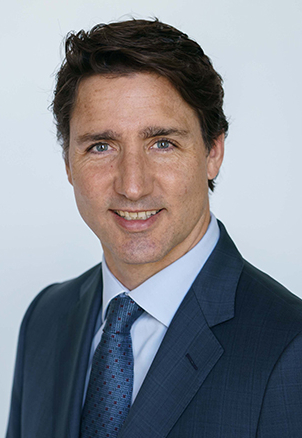
 *Track and field athletics
*Track and field athletics
 4x100 m Men
4x100 m Men
 Commonwealth of Nations
Commonwealth of Nations
 Canada
Canada
 Leichtathletik-Weltmeisterschaften
Leichtathletik-Weltmeisterschaften
 1997 Athens
1997 Athens
 Leichtathletik-Weltmeisterschaften
Leichtathletik-Weltmeisterschaften
 1995 Gothenburg
1995 Gothenburg

 Mitglieder der NATO
Mitglieder der NATO

 Party and government
Party and government
 Group of the twenty most important industrial and emerging countries
Group of the twenty most important industrial and emerging countries

 Party and government
Party and government
 Group of Seven,G7
Group of Seven,G7


Kanada (englisch und französisch Canada) ist ein Staat in Nordamerika, der zwischen dem Atlantik im Osten und dem Pazifik im Westen liegt und nordwärts bis zum Arktischen Ozean reicht. Bundeshauptstadt ist Ottawa, die bevölkerungsreichste Stadt ist Toronto. Die einzige Landgrenze ist jene zu den USA im Süden und im Nordwesten. Kanada ist nach Russland der zweitgrößte Staat der Erde, hat aber mit knapp 38 Millionen Einwohnern nur eine Bevölkerungsdichte von 3,6 Personen pro km².
Die Besiedlung durch die First Nations begann spätestens vor 12.000 Jahren, die Inuit folgten vor rund 5000 Jahren. Ab dem späten 15. Jahrhundert landeten Europäer an der Ostküste und begannen um 1600 mit der Kolonisierung. Dabei setzten sich zunächst Franzosen und Engländer fest. In dieser Zeit breitete sich die Bezeichnung „Canada“ aus, das ursprünglich ein Name für ein Irokesendorf war. Frankreich trat 1763 seine Kolonie Neufrankreich an Großbritannien ab. Im Jahre 1867 gründeten drei britische Kolonien die Kanadische Konföderation. Mit dem Statut von Westminster erhielt das Land 1931 gesetzgeberische Unabhängigkeit, weitere verfassungsrechtliche Bindungen zum Vereinigten Königreich wurden 1982 aufgehoben. Nominelles Staatsoberhaupt ist Königin Elisabeth II., die durch den Generalgouverneur von Kanada vertreten wird.
Kanada ist ein auf dem Westminster-System basierender parlamentarisch-demokratischer Bundesstaat und eine parlamentarische Monarchie. Amtssprachen sind Englisch und Französisch. Die Unabhängigkeitsbestrebungen Québecs, die Stellung der frankophonen Kanadier und die Rechte der indigenen Völker (neben den First Nations und Inuit die Métis) sind wichtige Konfliktlinien in Staat und Gesellschaft. Die Themen Klimawandel und Umweltschutz, Einwanderungspolitik und Rohstoffabhängigkeit sowie das Verhältnis zum südlichen Nachbarn USA, von dem kulturell und historisch bedingt ein ambivalentes Bild besteht, kennzeichnen die öffentlichen Debatten.
加拿大(英语、法语:Canada,IPA读音:/ˈkænədə/(英)/kanada/(法))为北美洲国家,西抵太平洋,东至大西洋,北滨北冰洋,东北方与丹麦领地格陵兰相望,东部与圣皮埃尔和密克隆相望,南方及西北方与美国接壤。加拿大的领土面积达998万4670平方千米,为全球面积第二大国家。加拿大素有“枫叶之国”的美誉,渥太华为该国首都。加拿大被《福布斯》列于2020年退休宜居国的名单中[8]。
加拿大在1400年前即有原住民在此生活。15世纪末,英国和法国殖民者开始探索北美洲的东岸,并在此建立殖民地。1763年,当七年战争结束后,法国被迫将其几乎所有的北美殖民地割让予英国。在随后的几十年中,英国殖民者向西探索至太平洋地区,并建立了数个新的殖民地。1867年7月1日,1867年宪法法案通过,加拿大省分裂为安大略和魁北克两省,与新不伦瑞克、新斯科舍三个英属北美殖民地组成加拿大联邦。在随后100多年里,其它几块英属北美殖民地陆续加入联邦,组成现代加拿大。1931年12月11日,英国通过威斯敏斯特法令,令加拿大成为独立国家,但国家元首依旧是当时的英国国王乔治五世,且英国国会依旧掌握有加拿大的修宪权。1933年和1949年,加拿大民事案件和刑事案件的终审权分别从英国枢密院司法委员会移交至加拿大最高法院。1982年4月17日,英国女王兼加拿大女王伊丽莎白二世签署命令,将加拿大宪法修宪权移交加拿大国会,至此加拿大与英国的特殊关系终结。
加拿大是实行联邦制、君主立宪制及议会制的国家,由十个省和三个地区组成,女王伊丽莎白二世为国家元首及加拿大君主,而加拿大总督为其及政府的代表。加拿大是双语国家,英语和法语为官方语言,原住民的语言被认定为第一语言。由于地处高纬度及地广人稀,该国一直奉行积极吸纳外来移民的政策,以至人口亦以移民为主,有近五分之一的国民于国外出生,是世界上拥有种族及文化最为多元的国家之一。近年来移民大部分来自亚洲。[9]
得益于丰富的天然资源和高度发达的科技,加拿大是富裕、经济发达的国家。以国际汇率计算,加拿大的人均国内生产总值在全世界排名第十六,人类发展指数排名第十。它在教育、政府的透明度、自由度、生活品质及经济自由的国际排名都名列前茅。积极参与国际事务,是联合国、北大西洋公约组织、北美空防司令部、七大工业国组织、二十国集团、亚太经济合作组织、经济合作与发展组织、英联邦和法语圈的成员国及太平洋岛国论坛的对话伙伴。
カナダ(英・仏: Canada、英語発音: /ˈkænədə/ ![]() 聞く キャナダ[2]、フランス語発音: /kanada/ カナダ[3])は、北アメリカ大陸北部に位置し、10の州と3の準州からなる連邦立憲君主制国家。首都はオタワ(オンタリオ州)。
聞く キャナダ[2]、フランス語発音: /kanada/ カナダ[3])は、北アメリカ大陸北部に位置し、10の州と3の準州からなる連邦立憲君主制国家。首都はオタワ(オンタリオ州)。
イギリス連邦加盟国であり、英連邦王国のひとつ。アメリカ合衆国と国境を接する。国土面積は世界最大のロシアに次いで広い。
歴史的に先住民族が居住する中、外からやってきた英仏両国の植民地連合体として始まった。1763年からイギリス帝国に包括された。1867年の連邦化をきっかけに独立が進み、1931年ウエストミンスター憲章で承認され、1982年憲法制定をもって政体が安定した[4]。一連の過程においてアメリカと政治・経済両面での関係が深まった。連邦制をとり、連邦政府の運営は首相を中心に行われている。
Canada is a country in the northern part of North America. Its ten provinces and three territories extend from the Atlantic to the Pacific and northward into the Arctic Ocean, covering 9.98 million square kilometres (3.85 million square miles), making it the world's second-largest country by total area. Its southern border with the United States, stretching 8,891 kilometres (5,525 mi), is the world's longest bi-national land border. Canada's capital is Ottawa, and its three largest metropolitan areas are Toronto, Montreal, and Vancouver.
Various indigenous peoples inhabited what is now Canada for thousands of years before European colonization. Beginning in the 16th century, British and French expeditions explored and later settled along the Atlantic coast. As a consequence of various armed conflicts, France ceded nearly all of its colonies in North America in 1763. In 1867, with the union of three British North American colonies through Confederation, Canada was formed as a federal dominion of four provinces. This began an accretion of provinces and territories and a process of increasing autonomy from the United Kingdom. This widening autonomy was highlighted by the Statute of Westminster of 1931 and culminated in the Canada Act of 1982, which severed the vestiges of legal dependence on the British parliament.
Canada is a parliamentary democracy and a constitutional monarchy in the Westminster tradition, with a monarch and a prime minister who serves as the chair of the Cabinet and head of government. The country is a realm within the Commonwealth of Nations, a member of the Francophonie and officially bilingual at the federal level. It ranks among the highest in international measurements of government transparency, civil liberties, quality of life, economic freedom, and education. It is one of the world's most ethnically diverse and multicultural nations, the product of large-scale immigration from many other countries. Canada's long and complex relationship with the United States has had a significant impact on its economy and culture.
A developed country, Canada has the seventeenth-highest nominal per-capita income globally as well as the thirteenth-highest ranking in the Human Development Index. Its advanced economy is the tenth-largest in the world, relying chiefly upon its abundant natural resources and well-developed international trade networks. Canada is part of several major international and intergovernmental institutions or groupings including the United Nations, NATO, the G7, the Group of Ten, the G20, the North American Free Trade Agreement and the Asia-Pacific Economic Cooperation forum.
Le Canada (prononcé [kanadɔ]4 Écouter ou [kanada]5 Écouter ; en anglais [ˈkænədə]6 Écouter) est un pays situé dans la partie septentrionale de l'Amérique du Nord. Monarchie constitutionnelle à régime parlementaire constituée en fédération, composée de dix provinces et trois territoires, le pays est encadré par l'océan Atlantique à l'est-nord-est et à l'est, par l'océan Arctique au nord-nord-ouest et au nord-est, enfin par l'océan Pacifique à l'ouest. Le Canada comprend deux frontières terrestres avec les États-Unis, l'une au sud et l'autre à l'ouest-nord-ouest avec l'Alaska ainsi qu'une frontière maritime avec la France, par le biais de l'archipel de Saint-Pierre-et-Miquelon, et le Danemark, par le biais du Groenland. Le territoire terrestre canadien s'étend sur 10 millions de kilomètres carrés, ce qui en fait le deuxième pays du monde pour la superficie après la Russie7. En 2019, il compte plus de 37 millions d'habitants1 et est ainsi le 37e pays du monde en ce qui concerne la population. Le territoire contient plus de 31 700 lacs8, ce qui fait du Canada le pays possédant parmi les plus grandes réserves d'eau douce du globe9,10. Les langues officielles au niveau fédéral sont l'anglais et le français. La capitale fédérale est Ottawa et la monnaie le dollar canadien11.
Les premiers occupants du territoire canadien ont été les Amérindiens, dont les migrations remontent à environ 15 000 ans12 lors de la dernière glaciation qui a abaissé le niveau des océans et créé un pont terrestre reliant l'Eurasie à l'Amérique, permettant à ceux-ci de s'installer13.
Si des Vikings s'installent dès le XIe jusqu'au XIVe siècle, les premières explorations des Européens débutent à la fin du XVe siècle, culminant avec les expéditions du Français Jacques Cartier dans le golfe du Saint-Laurent. Après quelques expériences infructueuses dans la première moitié du XVIe siècle, le 5 août 1583, la colonie anglaise de Terre-Neuve est fondée, suivie des premiers comptoirs pérennes français sur le continent entre 1600 et 1608, amorçant le processus de la colonisation européenne. Par la suite, d'autres colonies britanniques et françaises sont établies, notamment dans la région de la côte Atlantique (Nouvelle-Écosse, Acadie), dans la vallée du fleuve Saint-Laurent et la péninsule du Labrador (Nouvelle-France) ainsi que dans la zone arctique, tandis que d'autres puissances européennes telles l'Espagne et la Russie explorent le reste du territoire canadien. À la suite de divers conflits dont surtout la guerre de Succession d'Espagne (1701-1714), la guerre de la Conquête (1754-1760) et la guerre d'indépendance des États-Unis (1775-1783), la Grande-Bretagne gagne et perd des territoires au XVIIIe siècle, aboutissant à ce qui correspond au territoire canadien d'aujourd'hui. Trois de ces colonies se fédèrent le 1er juillet 1867 et forment le dominion du Canada, nation indépendante sous domination partielle de la Couronne britannique. Sa souveraineté totale est ensuite garantie par la déclaration Balfour de 1926, le Statut de Westminster de 1931 et le rapatriement de sa Constitution en 1982.
L'histoire contemporaine du Canada a été marquée par une vigoureuse expansion territoriale, la ruée vers l'or et la participation à la Première Guerre mondiale. Le pays fut durement touché par la Grande Dépression en 1929 mais son économie rebondit grâce à sa participation à la Seconde Guerre mondiale, où il émergea comme puissance moyenne et fut l'un des vainqueurs en tant que membre des Alliés14.
En 2015, le Canada possède le dixième revenu par habitant le plus élevé15, et est classé neuvième par le PNUD en termes d'indice de développement humain16. Il s'agit de la dixième puissance économique mondiale par son PIB en 2017, les principaux secteurs de son économie étant les services, les télécommunications, l'agriculture, l'énergie, l'aéronautique et la construction automobile. Il entretient de forts liens avec les États-Unis (pays anglo-saxon le plus proche et partageant une partie de son histoire), qui sont son principal client et fournisseur avec lequel perdure une des relations les plus intimes et les plus approfondies au monde entre deux nations. Le pays est un des meneurs en matière de recherche scientifique17, et se range parmi les plus éduqués du monde en étant classé premier par le nombre d'adultes possédant une éducation post-secondaire, avec 51 % d'entre eux ayant au moins atteint un diplôme post-secondaire chez sa population âgée de 25 à 64 ans18. Le Canada est membre du G7, du G20, de l'Accord de libre-échange nord-américain (ALENA), de l'Organisation du traité de l'Atlantique nord (OTAN), de la Coopération économique pour l'Asie-Pacifique (APEC), de l'Organisation des États américains (OEA), de l'Organisation de coopération et de développement économiques (OCDE), de l'Organisation des Nations unies (ONU), du Commonwealth et de l'Organisation internationale de la francophonie.
Il Canada (AFI: /ˈkanada/)[5] o Canadà (AFI: /kanaˈda/)[6] è uno Stato indipendente dell'America Settentrionale[7] bagnato dall'Atlantico a est, dal Mar Glaciale Artico a nord e dall'Oceano Pacifico a ovest. Con una superficie di 9897170 km² è il secondo paese del mondo per superficie totale dopo la Russia. Confina solo con il territorio degli Stati Uniti d'America: quelli continentali a sud, in buona parte lungo la linea del 49º parallelo Nord, e con lo Stato dell'Alaska a nord-ovest quasi interamente lungo il 141º meridiano Ovest:[7] si tratta del confine terrestre tra due Stati più lungo del mondo (8893 km).
Abitato, prima dell'arrivo europeo sul continente, da popolazioni aborigene, il territorio dell'attuale Canada fu colonizzato da Francia e Regno Unito a inizio XVII secolo[7] a partire dalla costa atlantica. I francesi persero in seguito i loro territori progressivamente a favore del Regno Unito: dapprima (1713) con il trattato di Utrecht alla fine della guerra di successione spagnola, con cui Terranova e la baia di Hudson furono cedute da Luigi XIV; a seguire nel 1763 dopo la sconfitta nella guerra franco-indiana, teatro nordamericano della guerra dei sette anni e, infine, con la vendita di Napoleone (1803) della Louisiana francese agli Stati Uniti d'America e delle sue ultime rimanenze oltre il confine canadese al Regno Unito. Il 1º luglio 1867 nacque la federazione canadese con l'unione delle tre colonie del Nord America Britannico di Nuova Scozia, Nuovo Brunswick e Canada,[8] che in seguito divennero quattro per la scissione della provincia del Canada in Ontario e Québec. Nel corso del tempo si aggiunsero sempre più province che avrebbero poi formato l'odierno stato nordamericano. Costituitosi in Stato unitario il 1º luglio 1867 come Confederazione canadese per iniziativa della Corona britannica, divenne formalmente indipendente l'11 dicembre 1931, data di promulgazione dello statuto di Westminster con cui il Regno Unito affrancò molti dei suoi ex dominion. Infine, con la nuova legge sul Canada del 1982 (il cosiddetto patriation o "rimpatrio") il Regno Unito abdicò anche al potere formale di modifica della costituzione canadese garantitogli dallo Statuto del 1931.
Il Canada è uno Stato membro del Commonwealth britannico del quale è uno dei sedici reami: di conseguenza, benché indipendente,[7] ha come capo di Stato il sovrano del Regno Unito, al 2020 la regina Elisabetta II che, nelle questioni di Stato riguardanti il Canada, agisce con il titolo di Elisabetta II Regina del Canada. In rappresentanza del sovrano agisce localmente il governatore generale del Canada, il quale è capo di Stato de facto, avendo le prerogative di accreditare il corpo diplomatico, assegnare l'incarico di primo ministro e nominare i giudici della Corte suprema, convocare le elezioni generali federali e in talune occasioni rappresentare il Paese a livello internazionale. Dal 1959 esiste la prassi non ufficiale di nominare alternativamente un governatore generale anglofono e uno francofono per rispetto dei due maggiori gruppi linguistici del Paese.
Il sistema politico è
 *Track and field athletics
*Track and field athletics
 4x100 m Woman
4x100 m Woman
 *Track and field athletics
*Track and field athletics
 4x400 m Woman
4x400 m Woman
 Germany
Germany

 European Union
European Union
 History of the European Union
History of the European Union

 European Union
European Union
 *Founding states
*Founding states

 Geography
Geography
 Leichtathletik-Weltmeisterschaften
Leichtathletik-Weltmeisterschaften
 2001 Edmonton
2001 Edmonton
 Leichtathletik-Weltmeisterschaften
Leichtathletik-Weltmeisterschaften
 1997 Athens
1997 Athens

 Mitglieder der NATO
Mitglieder der NATO

 Party and government
Party and government
 Group of the twenty most important industrial and emerging countries
Group of the twenty most important industrial and emerging countries

 Party and government
Party and government
 Group of Seven,G7
Group of Seven,G7

 States of Europe
States of Europe
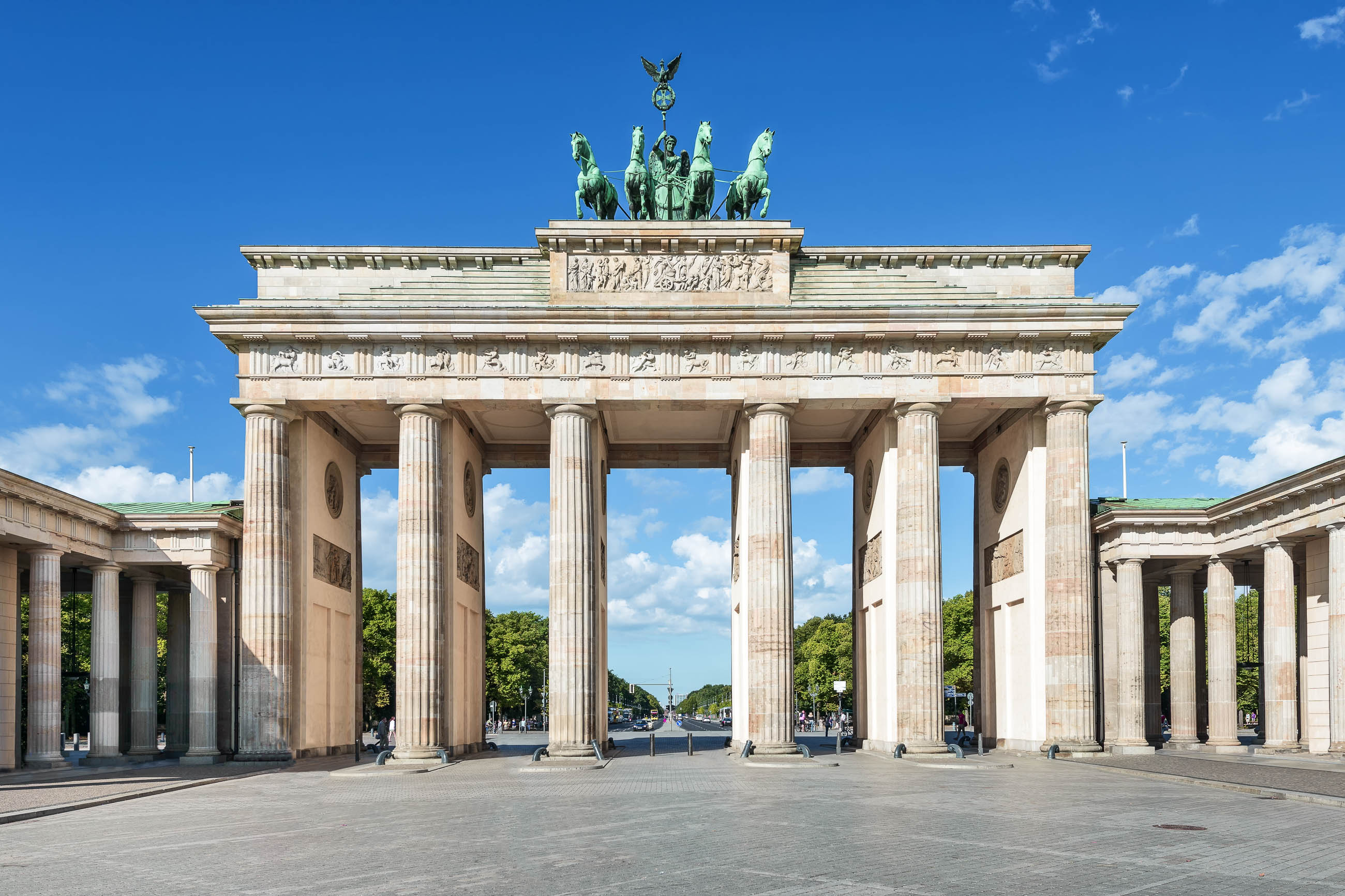
(Vollform: Bundesrepublik Deutschland) ist ein föderal verfasster Staat in Mitteleuropa, der aus den 16 deutschen Ländern besteht. Die Bundesrepublik ist ein freiheitlich-demokratischer Rechtsstaat[8] und stellt die jüngste Ausprägung des deutschen Nationalstaates dar.[9] Mit rund 82,8 Millionen Einwohnern (31. Dezember 2016) zählt Deutschland zu den dicht besiedelten Flächenstaaten.
An Deutschland grenzen neun Staaten, im Norden die Gewässer der Nord- und Ostsee und im Süden das Bergland der Alpen. Es liegt in der gemäßigten Klimazone. Bundeshauptstadt sowie bevölkerungsreichste deutsche Stadt ist Berlin. Weitere bedeutende Metropolen sind Hamburg, München, Köln, Frankfurt, Stuttgart und Düsseldorf; größter Ballungsraum ist das Ruhrgebiet. Deutschland gilt international als das Land mit der zweithöchsten Zahl von Einwanderern nach den Vereinigten Staaten (Stand 2015).[10][11] Seine Bevölkerung ist die zweitälteste und hat mit 1,47 Kindern pro Frau (2014) eine der niedrigsten Geburtenraten der Welt.[12]
Auf dem Territorium des heutigen Deutschlands wurden frühe Siedlungsformen von vor etwa 500.000 Jahren nachgewiesen, wie Funde vom Heidelbergmenschen, vom Neandertaler sowie von einigen der ältesten Kunstwerke der Menschheit aus der Altsteinzeit belegen. Seit der Antike ist die lateinische Bezeichnung Germania für das Siedlungsgebiet der Germanen bekannt, seit dem 4. Jahrhundert ist die Verwendung des Begriffes deutsch in althochdeutscher Form belegt. Das seit dem 10. Jahrhundert bestehende Heilige Römische Reich bestand aus vielen Herrschaftsgebieten und war mit dem 1815 nachfolgenden Deutschen Bund der Ursprung des föderalen deutschen Staates. Dieser entstand erstmals mit der Gründung des Deutschen Reichs im Jahr 1871, woraus eine rasche Wirtschaftsentwicklung vom Agrar- zum Industrieland folgte.
Nach dem Ersten Weltkrieg kam es infolge der Novemberrevolution 1918 zur Bildung der demokratischen Weimarer Republik und zum Friedensvertrag von Versailles. Der nationalsozialistischen Diktatur von 1933 bis 1945 samt verheerendem Zweitem Weltkrieg folgte eine Zeit der Veränderung und Teilung des Staates. Der Gründung der Bundesrepublik als demokratischer westdeutscher Teilstaat mit Inkrafttreten des Grundgesetzes am 24. Mai 1949 folgte wiederum die Gründung der sozialistischen DDR am 7. Oktober 1949 als ostdeutscher Teilstaat.[13] Nach der friedlichen Revolution 1989 folgte die Wiedervereinigung beider Landesteile am 3. Oktober 1990; seitdem wird der Tag der Deutschen Einheit als nationaler Feiertag begangen.
Deutschland ist Gründungsmitglied des Europarates und der Europäischen Union sowie deren bevölkerungsreichstes Land. Mit 18 anderen EU-Mitgliedstaaten bildet es eine Währungsunion, die Eurozone. Es ist Mitglied der UN, der OECD, der OSZE, der NATO, der G7 und der G20. Die Bundesrepublik Deutschland gilt als einer der politisch einflussreichsten Staaten Europas und ist ein gesuchtes Partnerland auf globaler Ebene.[14]
Gemessen am Bruttoinlandsprodukt ist Deutschland die größte Volkswirtschaft Europas und die viertgrößte der Welt.[5] Im Jahr 2015 war es die drittgrößte Export- und Importnation.[15] Es ist marktwirtschaftlich geprägt. Aufgrund der Rohstoffarmut und der Automatisierung der Industrie entwickelt sich das Land, das stark von der Qualität seines Bildungssystems abhängt, zunehmend zur Informations- und Wissensgesellschaft.[16] Gemäß dem Index der menschlichen Entwicklung zählt Deutschland zu den sehr hoch entwickelten Ländern.[17]
Die deutsche Sprache ist die meistgesprochene Muttersprache und nach Englisch die zweithäufigste Fremdsprache in der Europäischen Union; die Zahl ihrer Sprecher rangiert weltweit auf dem zehnten Platz. Die Kultur Deutschlands hat vielschichtige und weltbekannte Ausdrucksformen hervorgebracht, etwa in der Kunst und Architektur, der Musik, der Philosophie, der Filmkultur, der Küche, der Traditionspflege, im Design, im Sport, in der Wissenschaft und der Wirtschaft. Das UNESCO-Welterbe in Deutschland sowie die Vielfalt der Kulturdenkmale und Altstädte ist umfangreich. Eine Vielzahl von National- und Naturparks sind im Land ausgewiesen.
德意志联邦共和国(德语:Bundesrepublik Deutschland、![]() 发音(帮助·信息))简称德国(德语:Deutschland)[参 7],是一个位于欧洲的联邦议会共和制国家,国家元首为联邦总统,政府首脑为联邦总理。它由16个联邦州组成,首都与最大城市为柏林。其国土面积约35.7万平方公里,南北距离为876公里,东西相距640公里,从北部的北海与波罗的海延伸至南部的阿尔卑斯山[参 8]。气候温和,季节分明。德国人口约8,180万,为欧洲联盟中人口最多的国家,也是世界第二大移民目的地,仅次于美国[参 9]。
发音(帮助·信息))简称德国(德语:Deutschland)[参 7],是一个位于欧洲的联邦议会共和制国家,国家元首为联邦总统,政府首脑为联邦总理。它由16个联邦州组成,首都与最大城市为柏林。其国土面积约35.7万平方公里,南北距离为876公里,东西相距640公里,从北部的北海与波罗的海延伸至南部的阿尔卑斯山[参 8]。气候温和,季节分明。德国人口约8,180万,为欧洲联盟中人口最多的国家,也是世界第二大移民目的地,仅次于美国[参 9]。
在50万年前的旧石器时代晚期,海德堡人及其后代尼安德特人生活在今德国中部。自古典时代以来各日耳曼部族开始定居于今日德国的北部地区。公元1世纪时,有罗马人著作的关于“日耳曼尼亚”的历史记载。在公元4到7世纪的民族迁徙期,日耳曼部族逐渐向欧洲南部扩张。自公元10世纪起,德意志领土组成神圣罗马帝国的核心部分[参 10]。16世纪时,德意志北部地区成为宗教改革中心。1871年,在普鲁士主导之下,多数德意志邦国统一并加入德意志帝国。在第一次世界大战和1918-1919年德国革命后,德意志帝国解体,议会制的魏玛共和国取而代之。1933年国家社会主义党获取政权并建立独裁统治,最终导致第二次世界大战及系统性种族灭绝的发生。在战败并经历同盟国军事占领后,两个德国分别建立:德意志民主共和国和德意志联邦共和国。在1990年10月3日重新统一成为现在的德国。
德国是世界大国之一,其国内生产总值以国际汇率计居世界第四,以购买力平价计居世界第五。其诸多工业和科技部门位居世界前列,例如全球驰名的德国车厂、精密部件等,为世界第三大出口国。德国为发达国家,生活水平居世界前列。德国人也以热爱大自然闻名,都市绿化率极高,也是欧洲再生能源大国,是可持续发展经济的样板,除了强调环境保护与自然生态保育,在人为饲养活体的态度十分严谨,不但获得大量外汇和资讯优势,其动物保护法律管束、生命教育水准也是首屈一指的,在高等教育方面并提供免费大学教育[参 11],并具备完善的社会保障制度和医疗体系,催生出拜尔等大药厂。
德国为1993年欧洲联盟建立时的创始国之一,为申根区一部分,并于1999年推动欧元区的建立。德国亦为联合国、北大西洋公约组织、八国集团、20国集团及经济合作与发展组织成员。其军事开支总额居世界第九。
德语是欧盟境内使用人数最多的母语。德国文化的丰富层次和对世界的影响表现在其美术和建筑、音乐、哲学以及电影等等。德国的文化遗产主要以老城为代表。另外国家公园和自然公园共计有上百处。
ドイツ連邦共和国(ドイツれんぽうきょうわこく、独: Bundesrepublik Deutschland)、通称ドイツ(独: Deutschland)は、中央ヨーロッパ西部に位置する連邦共和制国家。首都および最大の都市はベルリン州。南がスイスとオーストリア、北にデンマーク、西をオランダとベルギーとルクセンブルク、東はポーランドとチェコとそれぞれ国境を接する。
欧州大陸における政治的・経済的な主要国であり、歴史上、多くの文化・科学・技術分野における重要な指導国でもある。人口は8300万人で、これは欧州連合において最大である。同国は限定的主権を有する16の州によって構成される。国土の総面積は35万7386平方キロメートルであり、主に温暖な気候に属する。かつて「西ドイツ」と呼ばれていた時代は「西欧」に分類されていたが、東ドイツ(ドイツ民主共和国)の民主化と東西ドイツの統一により「中欧」または「中西欧」に分類されるようになっている。
ドイツ経済の規模は、対米ドル名目為替レートによって計算される米ドル建て名目GDP(MERベースGDP)で世界第4位であり、対米ドル購買力平価によって計算される米ドル建て実質GDP(PPPベースGDP)で世界第5位である。技術及び産業分野における世界的なリーダーとして、世界第3位の輸出国かつ世界第3位の輸入国である。世界最古のユニバーサルヘルスケア制度を含む、包括的な社会保障を特色とする非常に高い生活水準が実現されている先進国である。豊かな政治及び文化の歴史で知られ、影響力ある多数の芸術家、音楽家、映画人、哲学者、科学者及び技術者、起業家の故国である。
1993年に欧州連合へ発展した1957年の欧州諸共同体の原加盟国であるほか、1995年以来シェンゲン圏の一員で、1999年以降はユーロ圏の一員でもある。また、国際連合、欧州評議会、NATO、G7、G20、OECDの主要なメンバーであり、欧州の大国「ビッグ4」や列強の一国に数えられる。アメリカ合衆国に次ぎ、ドイツは世界第2位の移住地である[1]。
Germany (German: Deutschland, pronounced [ˈdɔʏtʃlant] (![]() listen)), officially the Federal Republic of Germany,[e] is a country in Central Europe. It is the second-most populous country in Europe after Russia, and the most populous member state of the European Union. Germany is situated between the Baltic and North seas to the north, and the Alps to the south; it covers an area of 357,022 square kilometres (137,847 sq mi), with a population of over 83 million within its 16 constituent states. It borders Denmark to the north, Poland and the Czech Republic to the east, Austria and Switzerland to the south, and France, Luxembourg, Belgium, and the Netherlands to the west. The nation's capital and largest city is Berlin, and its financial centre is Frankfurt; the largest urban area is the Ruhr.
listen)), officially the Federal Republic of Germany,[e] is a country in Central Europe. It is the second-most populous country in Europe after Russia, and the most populous member state of the European Union. Germany is situated between the Baltic and North seas to the north, and the Alps to the south; it covers an area of 357,022 square kilometres (137,847 sq mi), with a population of over 83 million within its 16 constituent states. It borders Denmark to the north, Poland and the Czech Republic to the east, Austria and Switzerland to the south, and France, Luxembourg, Belgium, and the Netherlands to the west. The nation's capital and largest city is Berlin, and its financial centre is Frankfurt; the largest urban area is the Ruhr.
Various Germanic tribes have inhabited the northern parts of modern Germany since classical antiquity. A region named Germania was documented before AD 100. In the 10th century, German territories formed a central part of the Holy Roman Empire. During the 16th century, northern German regions became the centre of the Protestant Reformation. Following the Napoleonic Wars and the dissolution of the Holy Roman Empire in 1806, the German Confederation was formed in 1815. In 1871, Germany became a nation-state when most of the German states unified into the Prussian-dominated German Empire. After World War I and the German Revolution of 1918–1919, the Empire was replaced by the semi-presidential Weimar Republic. The Nazi seizure of power in 1933 led to the establishment of a dictatorship, World War II, and the Holocaust. After the end of World War II in Europe and a period of Allied occupation, Germany was divided into the Federal Republic of Germany, generally known as West Germany, and the German Democratic Republic, East Germany. The Federal Republic of Germany was a founding member of the European Economic Community and the European Union, while the German Democratic Republic was a communist Eastern Bloc state and member of the Warsaw Pact. After the fall of communism, German reunification saw the former East German states join the Federal Republic of Germany on 3 October 1990—becoming a federal parliamentary republic.
Germany is a great power with a strong economy; it has the largest economy in Europe, the world's fourth-largest economy by nominal GDP, and the fifth-largest by PPP. As a global leader in several industrial, scientific and technological sectors, it is both the world's third-largest exporter and importer of goods. As a developed country, which ranks very high on the Human Development Index, it offers social security and a universal health care system, environmental protections, and a tuition-free university education. Germany is a member of the United Nations, NATO, the G7, the G20, and the OECD. It has the third-greatest number of UNESCO World Heritage Sites.
L'Allemagne (/almaɲ/ ; en allemand : Deutschland /ˈdɔʏtʃlant/ Écouter), en forme longue la République fédérale d'Allemagneb, abrégée en RFA (en allemand : Bundesrepublik Deutschland /ˈbʊn.dəs.ʁe.puˌblik ˈdɔʏtʃ.lant/ Écouter, abrégée en BRD), est un État d'Europe centrale, et selon certaines définitions d'Europe de l'Ouest, entouré par la mer du Nord, le Danemark et la mer Baltique au nord, par la Pologne à l'est-nord-est, par la Tchéquie à l'est-sud-est, par l'Autriche au sud-sud-est, par la Suisse au sud-sud-ouest, par la France au sud-ouest, par la Belgique et le Luxembourg à l'ouest, enfin par les Pays-Bas à l'ouest-nord-ouest. Décentralisée et fédérale, l'Allemagne compte quatre métropoles de plus d'un million d'habitants : la capitale Berlin, ainsi que Hambourg, Munich et Cologne. Le siège du gouvernement est situé dans la ville de Berlin et dans la ville fédérale de Bonn. Francfort-sur-le-Main est considérée comme la capitale financière de l'Allemagnec : dans cette ville se trouve le siège de la Banque centrale européenne.
Beaucoup de peuples germaniques occupent le Nord du territoire actuel depuis l'Antiquité classique. Durant ce que l'on nomme les invasions barbares, les tribus germaniques se rapprochent du Sud de ce territoire. À partir du Xe siècle, les territoires forment la partie centrale du Saint-Empire romain germanique. Au XVIe siècle, le Nord de l'Allemagne est au cœur de la réforme protestante. Le pangermanisme entraîne l'unification des États allemands en 1871 pour former l'Empire allemand. Après la Première Guerre mondiale, et la révolution allemande de 1918-1919, l'Empire est remplacé par la république parlementaire de Weimar. L'accès au pouvoir des nazis en 1933 mène à la Seconde Guerre mondiale, au cours de laquelle le régime totalitaire connu sous le nom de Troisième Reich, fondé sur un racisme et un antisémitisme singulier, et dirigé par le dictateur Adolf Hitler, perpètre des crimes de masse en Europe, dont la Shoah, et laisse le pays en ruines. Après sa défaite militaire en 1945, l'Allemagne perd des territoires et — par la volonté des vainqueurs alliés qui entrent dans la « guerre froide » — est contrainte de se scinder en deux nations : à l'ouest un État démocratique, la République fédérale d'Allemagne (en abrégé RFA) et, à l'est, la République démocratique allemande (en abrégé RDA) sous emprise de l'Union soviétique. Le mur de Berlin — qui symbolise cette division dans l'ancienne capitale — tombe le 9 novembre 1989 et l'Allemagne est à nouveau réunifiée le 3
 *Track and field athletics
*Track and field athletics
 4x100 m Woman
4x100 m Woman
 *Track and field athletics
*Track and field athletics
 4x400 m Woman
4x400 m Woman
 *Track and field athletics
*Track and field athletics
 4x100 m Men
4x100 m Men
 *Track and field athletics
*Track and field athletics
 4x400 m Men
4x400 m Men
 *United States presidential election
*United States presidential election
 Atomic bomb
Atomic bomb

 History
History
 M 1500 - 2000 AD
M 1500 - 2000 AD

 History
History

 History
History

 History
History

 History
History
 N 2000 - 2100 AD
N 2000 - 2100 AD
 Leichtathletik-Weltmeisterschaften
Leichtathletik-Weltmeisterschaften
 2017 London
2017 London
 Leichtathletik-Weltmeisterschaften
Leichtathletik-Weltmeisterschaften
 2015 Beijing
2015 Beijing
 Leichtathletik-Weltmeisterschaften
Leichtathletik-Weltmeisterschaften
 2013 Moskau
2013 Moskau
 Leichtathletik-Weltmeisterschaften
Leichtathletik-Weltmeisterschaften
 2009 Berlin
2009 Berlin
 Leichtathletik-Weltmeisterschaften
Leichtathletik-Weltmeisterschaften
 2007 Osaka
2007 Osaka
 Leichtathletik-Weltmeisterschaften
Leichtathletik-Weltmeisterschaften
 2011 Daegu
2011 Daegu
 Leichtathletik-Weltmeisterschaften
Leichtathletik-Weltmeisterschaften
 2005 Helsinki
2005 Helsinki
 Leichtathletik-Weltmeisterschaften
Leichtathletik-Weltmeisterschaften
 2003 Saint-Denis
2003 Saint-Denis
 Leichtathletik-Weltmeisterschaften
Leichtathletik-Weltmeisterschaften
 1999 Seville
1999 Seville
 Leichtathletik-Weltmeisterschaften
Leichtathletik-Weltmeisterschaften
 1997 Athens
1997 Athens
 Leichtathletik-Weltmeisterschaften
Leichtathletik-Weltmeisterschaften
 1995 Gothenburg
1995 Gothenburg
 Leichtathletik-Weltmeisterschaften
Leichtathletik-Weltmeisterschaften
 1993 Stuttgart
1993 Stuttgart
 Leichtathletik-Weltmeisterschaften
Leichtathletik-Weltmeisterschaften
 1991 Tokyo
1991 Tokyo
 Leichtathletik-Weltmeisterschaften
Leichtathletik-Weltmeisterschaften
 1987 Rome
1987 Rome
 Leichtathletik-Weltmeisterschaften
Leichtathletik-Weltmeisterschaften
 1983 Helsinki
1983 Helsinki




 Military, defense and equipment
Military, defense and equipment
 Nuclear Weapon
Nuclear Weapon

 Mitglieder der NATO
Mitglieder der NATO

 Party and government
Party and government
 Group of the twenty most important industrial and emerging countries
Group of the twenty most important industrial and emerging countries

 Party and government
Party and government
 Group of Seven,G7
Group of Seven,G7
 United States
United States

 United Nations
United Nations
 United Nations Security Council
United Nations Security Council
 Hydrogen bomb
Hydrogen bomb

Die Vereinigten Staaten von Amerika (englisch United States of America; abgekürzt USA), kurz auch Vereinigte Staaten (englisch United States, abgekürzt U.S., US) genannt und häufig auch umgangssprachlich verkürzt zu Amerika (englisch America), sind eine föderale Republik. Diese besteht aus 50 Bundesstaaten, einem Bundesdistrikt (der Hauptstadt Washington, D.C.), fünf größeren Territorien und etlichen Inselterritorien. Die 48 zusammenhängenden Continental United States (häufig Lower 48 genannt) sowie Alaska liegen in Nordamerika, während Hawaii und kleinere Außengebiete im Pazifik beziehungsweise in der Karibik liegen. Das Land weist eine sehr hohe geographische und klimatische Diversität mit einer großen Vielfalt an Tier- und Pflanzenarten auf.
Die Vereinigten Staaten von Amerika sind der drittgrößte Staat der Erde, gemessen an der Fläche von 9,83 Millionen Quadratkilometern[3] (nach Russland und Kanada) und gemessen an der Bevölkerung von etwa 328 Millionen Einwohnern (nach China und Indien). Die nach Einwohnerzahl größte Stadt ist New York City, bedeutende Metropolregionen sind Los Angeles, Chicago, Dallas, Houston, Philadelphia, Washington, Miami, Atlanta, Boston und San Francisco, mit jeweils über 5 Millionen Einwohnern. Der Grad der Urbanisierung liegt bei 81,96 Prozent (Stand: 2015).[9]
Bedingt durch die Einwanderung aus einer Vielzahl von Ländern sind die Vereinigten Staaten eines der ethnisch multikulturellsten Länder. Anders als in 32 Bundesstaaten gibt es auf Bundesebene keine gesetzliche Amtssprache, jedoch herrscht Englisch als De-Facto-Amtssprache vor. Im Südwesten sowie in Miami ist zusätzlich die spanische Sprache weit verbreitet. Insgesamt waren 2015 mehr als 350 Sprachen in heimischem Gebrauch, davon allein 150 indigene. Darunter waren als größte die der Yupik in Alaska, der Dakota aus der Sioux-Sprachfamilie sowie die Sprache der Apachen in Gebrauch, dann Keres, die Sprache der Pueblo-Indianer, und Cherokee.[10]
Paläoindianer wanderten vor mehr als 13.000 Jahren aus Asien in das nordamerikanische Festland der heutigen Vereinigten Staaten ein (Buttermilk Creek Complex), nachdem sie mehrere Jahrtausende zuvor das heute zu den USA gehörende Alaska besiedelt hatten. Die europäische Kolonisierung begann etwa um 1600 vorwiegend aus England, allerdings in langwieriger Auseinandersetzung mit Frankreich. Die Vereinigten Staaten gingen aus den 13 Kolonien an der Atlantikküste hervor. Streit zwischen Großbritannien und den amerikanischen Kolonien führte zur Amerikanischen Revolution. Am 4. Juli 1776 verabschiedeten Delegierte der 13 Kolonien die Unabhängigkeitserklärung der Vereinigten Staaten und somit die Gründung der Vereinigten Staaten von Amerika. Der Amerikanische Unabhängigkeitskrieg, der mit der Anerkennung der Unabhängigkeit endete, war der erste erfolgreiche Unabhängigkeitskrieg gegen eine europäische Kolonialmacht. Die heutige Verfassung wurde am 17. September 1787 verabschiedet. Bisher wurden 27 Zusatzartikel ergänzt. Die ersten zehn Zusatzartikel, die gemeinsam als Bill of Rights bezeichnet werden, wurden 1791 ratifiziert und garantieren eine Vielzahl von unveräußerlichen Rechten.
Angetrieben von der Doktrin Manifest Destiny begannen die Vereinigten Staaten eine Expansion über Nordamerika, die sich über das 19. Jahrhundert erstreckte. Dies schloss die gewaltsame Vertreibung indigener indianischer Stämme, den Erwerb neuer Territorien u. a. im Mexikanisch-Amerikanischen Krieg und die Gründung neuer Bundesstaaten ein. Der Amerikanische Bürgerkrieg führte 1865 zum Ende der legalen Sklaverei in den Vereinigten Staaten. Zum Ende des 19. Jahrhunderts erreichten der Staat eine Ausdehnung bis zum Pazifik, ihre Wirtschaft wurde zur größten weltweit. Der Spanisch-Amerikanische Krieg und der Erste Weltkrieg bestätigten die Rolle der Vereinigten Staaten als globale Militärmacht. Aus dem Zweiten Weltkrieg gingen die USA als Supermacht und als erstes Land mit Atomwaffen hervor und wurden eines von fünf ständigen Mitgliedern im Sicherheitsrat der Vereinten Nationen. Nach Ende des Kalten Krieges und dem Zerfall der Sowjetunion sind die USA die einzige verbliebene Supermacht. Sie sind Gründungsmitglied der Vereinten Nationen, der Organisation Amerikanischer Staaten (OAS) und vieler weiterer internationaler Organisationen. Ihr politischer und kultureller Einfluss ist weltweit groß.
Die Vereinigten Staaten sind ein industrialisierter Staat und die größte Volkswirtschaft mit einem Bruttoinlandsprodukt in Höhe von 18,5 Billionen US-Dollar im Jahr 2016, was 25 % der nominellen oder 17 % der kaufkraftbereinigten globalen Wirtschaftsleistung entsprach.[7] Das Land hatte 2016 das achthöchste Pro-Kopf-Einkommen. Laut der Weltbank ist die Einkommensungleichverteilung in den Vereinigten Staaten eine der höchsten unter den OECD-Staaten.[11] Die Wirtschaftsleistung des Landes wird durch den Reichtum an natürlichen Ressourcen, eine gut entwickelte Infrastruktur und eine hohe durchschnittliche Produktivität begünstigt.[12][13] Obwohl die Wirtschaftsstruktur gemeinhin als postindustriell angesehen wird, ist das Land nach wie vor einer der weltgrößten Güterproduzenten.[14] Das Land war 2016 für 36 % der weltweiten Militärausgaben verantwortlich und liegt damit auf Platz 1, gefolgt von China mit 13 % und Russland mit 4,1 %.[15] Der in Folge der Terroranschläge am 11. September 2001 ausgerufene Ausnahmezustand ist seit 2001 in Kraft.[16]
美国是一个高度发达的资本主义国家,其政治、教育、经济、军事、文化、创新等实力领衔全球。作为世界第一军事大国,其高等教育水平和科研技术水平以及航空航天技术方面,也是当之无愧的世界第一,其科研经费投入之大、研究型高校企业之多、科研成果之丰富堪称世界典范。同时,美国还拥有苹果、微软、戴尔、惠普、波音等一系列世界著名企业。
美利坚合众国(英语:United States of America,缩写为 U.S.A.、通称为 United States、缩写为U.S.、或America、The States),中文通称美国,是由其下辖50个州、华盛顿哥伦比亚特区、五个自治领土及外岛共同组成的联邦共和国[注 1]。美国本土48州和联邦特区位于北美洲中部,东临大西洋,西临太平洋,北面是加拿大,南部和墨西哥及墨西哥湾接壤,本土位于温带、副热带地区。阿拉斯加州位于北美大陆西北方,东部为加拿大,西隔白令海峡和俄罗斯相望;夏威夷州则是太平洋中部的群岛。美国在加勒比海和太平洋还拥有多处境外领土和岛屿地区。此外,美国还在全球140多个国家和地区拥有着374个海外军事基地。
美国拥有982万平方公里国土面积,位居世界第三(依陆地面积定义为第四大国);同时拥有接近超过3.3亿人口,为世界第三人口大国。因为有着来自世界各地的大量移民,它是世界上民族和文化最多元的国家之一[14]。美国地形与气候复杂多样,是多种野生动物的家园[15]。
一万五千多年前,古印第安人自亚洲迁徙至北美大陆[16]。16世纪欧洲开始殖民北美。现今的合众国起始于东海岸的13个英属美洲殖民地。欧洲七年战争后,大不列颠王国与其殖民地之间的争议愈发剧烈,最终导致在1775年爆发美国革命。1776年7月4日,正与大不列颠进行独立战争的各殖民地派出代表,协同一致发表《独立宣言》。战争终止于1783年,大不列颠王国承认这13个北美殖民地脱离管辖而独立,与其签订《巴黎条约》。这场战争也是第一场成功脱离欧洲殖民帝国的独立战争[17]。1781年,《邦联条例》在邦联13个构成州获得通过,共同组成了邦联议会。1787年《美利坚合众国宪法》完稿,将“美利坚合众国”改制为联邦体制,联邦政府随之成立。1791年,合称为权利法案的十条宪法修正案获得批准,担保了基本民权。
美国自19世纪开始在北美通过强行移置原住民,征服及购买等方法大力扩张领土,随着逐渐不断地承认扩张领地为新州份,至1848年美国疆域已横跨整个北美大陆[18]。19世纪下半叶爆发的内战,使曾经合法的奴隶制度得以终结[19][20]。在19世纪末,美国已将其领土延伸到太平洋的夏威夷。美国经济在工业革命的推动下,自那时起也开始蓬勃发展[21]。随后美西战争的胜利,使美国势力进入加勒比海地区及太平洋西部;而参与第一次世界大战则奠定其作为一个全球性军事力量的地位。尽管在1930年代经历经济大萧条,美国在第二次世界大战获得胜利之后崛起成为超级大国。作为联合国安全理事会常任理事国,美国是世界上第一个研发出核武器,也是唯一一个曾将其投入实战的国家。战后美国与苏联进行了数十年冷战,顶峰时期的太空竞赛促使了人类第一次登月计划的成功。在1991年苏联解体后,美国成为世上唯一超级强国[22]。
美国作为一个高度发达国家,是世界上最大的进口国及第二大的商品出口国,国内生产总值按国际汇率排名世界第一、而依购买力平均则位列第二。在国民平均薪资[23]、人类发展指数、人均国内生产总值以及人均生产力[24]等社会经济学表现指标上,美国均处于世界领先地位。美国经济已步入后工业时代,服务行业占据经济主导地位,位列世界第一。同时,其生产制造业规模也极为庞大,位居于世界第二[25]。仅占据全世界4.4%人口的美国[26],贡献了世界四分之一的国内生产总值和三分之一的全球军事开支[27],这使其在经济和军事上均处于全世界最重要的地位。美国在政治和文化上是一支世界显著并影响深远的力量,也在科学研究和技术创新上占据世界领导地位[28]。美国是联合国、世界银行、国际货币基金组织、美洲国家组织等的创始成员国。
アメリカ合衆国(アメリカがっしゅうこく、英語: United States of America)、通称アメリカ、米国(べいこく)は、50の州および連邦区から成る連邦共和国である[6][7]。
アメリカ本土の48州および同国首都ワシントンD.C.(コロンビア特別区)は、カナダとメキシコの間の北アメリカ中央に位置する。
アラスカ州は北アメリカ北西部の角に位置し、東ではカナダと、西ではベーリング海峡をはさんでロシアと国境を接している。ハワイ州は中部太平洋における島嶼群である。
同国は、太平洋およびカリブに5つの有人の海外領土および9つの無人の海外領土を有する。985万平方キロメートル (km2) の総面積は世界第3位または第4位、3億1千7百万人の人口は世界第3位である。
同国は世界で最も民族的に多様かつ多文化な国の1つであり、これは多数の国からの大規模な移住の産物とされている[8]。
また同国の広大な国土における地理および気候も極めて多様であり、多種多様な野生生物が存在する。
米国は先進国かつ世界最大級の国民経済を有する[9]。同国経済は、豊富な天然資源と高度な労働者の生産性により支えられている[10]。同国経済は脱工業化社会だとされている一方、世界最大の製造国のうちの1つであり続けている[11]。同国は世界の軍事支出の37%を占め[12]、世界最高位の経済・軍事大国であり、多大な影響を及ぼす政治・文化的勢力であり、科学研究・技術革新におけるリーダー的存在とされている[13]。
The United States of America (USA), commonly known as the United States (U.S. or US) or America, is a country composed of 50 states, a federal district, five major self-governing territories, and various possessions.[f] At 3.8 million square miles (9.8 million km2), the United States is the world's third or fourth largest country by total area[g] and is slightly smaller than the entire continent of Europe's 3.9 million square miles (10.1 million km2). With a population of over 327 million people, the U.S. is the third most populous country. The capital is Washington, D.C., and the largest city by population is New York. Forty-eight states and the capital's federal district are contiguous in North America between Canada and Mexico. The State of Alaska is in the northwest corner of North America, bordered by Canada to the east and across the Bering Strait from Russia to the west. The State of Hawaii is an archipelago in the mid-Pacific Ocean. The U.S. territories are scattered about the Pacific Ocean and the Caribbean Sea, stretching across nine official time zones. The extremely diverse geography, climate, and wildlife of the United States make it one of the world's 17 megadiverse countries.[19]
Paleo-Indians migrated from Siberia to the North American mainland at least 12,000 years ago.[20] European colonization began in the 16th century. The United States emerged from the thirteen British colonies established along the East Coast. Numerous disputes between Great Britain and the colonies following the French and Indian War led to the American Revolution, which began in 1775, and the subsequent Declaration of Independence in 1776. The war ended in 1783 with the United States becoming the first country to gain independence from a European power.[21] The current constitution was adopted in 1788, with the first ten amendments, collectively named the Bill of Rights, being ratified in 1791 to guarantee many fundamental civil liberties. The United States embarked on a vigorous expansion across North America throughout the 19th century, acquiring new territories,[22] displacing Native American tribes, and gradually admitting new states until it spanned the continent by 1848.[22]
During the second half of the 19th century, the Civil War led to the abolition of slavery.[23][24] By the end of the century, the United States had extended into the Pacific Ocean,[25] and its economy, driven in large part by the Industrial Revolution, began to soar.[26] The Spanish–American War and World War I confirmed the country's status as a global military power. The United States emerged from World War II as a global superpower, the first country to develop nuclear weapons, the only country to use them in warfare, and a permanent member of the United Nations Security Council. During the Cold War, the United States and the Soviet Union competed in the Space Race, culminating with the 1969 Moon landing. The end of the Cold War and the collapse of the Soviet Union in 1991 left the United States as the world's sole superpower.[27]
The United States is the world's oldest surviving federation. It is a federal republic and a representative democracy. The United States is a founding member of the United Nations, World Bank, International Monetary Fund, Organization of American States (OAS), and other international organizations. The United States is a highly developed country, with the world's largest economy by nominal GDP and second-largest economy by PPP, accounting for approximately a quarter of global GDP.[28] The U.S. economy is largely post-industrial, characterized by the dominance of services and knowledge-based activities, although the manufacturing sector remains the second-largest in the world.[29] The United States is the world's largest importer and the second largest exporter of goods, by value.[30][31] Although its population is only 4.3% of the world total,[32] the U.S. holds 31% of the total wealth in the world, the largest share of global wealth concentrated in a single country.[33]
Despite wide income and wealth disparities, the United States continues to rank very high in measures of socioeconomic performance, including average wage, human development, per capita GDP, and worker productivity.[34][35] The United States is the foremost military power in the world, making up a third of global military spending,[36] and is a leading political, cultural, and scientific force internationally.[37]
Les États-Unis, en forme longue les États-Unis d'Amérique4 (en anglais : United States et United States of America, également connus sous les abréviations US et USA), sont un pays transcontinental dont l'essentiel du territoire se situe en Amérique du Nord. Les États-Unis ont la structure politique d'une république constitutionnelle fédérale à régime présidentiel composée de cinquante États, dont quarante-huit sont adjacents et forment le Mainland. Celui-ci est encadré par l'océan Atlantique à l'est et l'océan Pacifique à l'ouest, et se trouve bordé au nord par le Canada et au sud par le Mexique. Les deux États non limitrophes sont l'Alaska, situé à l'ouest du Canada, et Hawaï, un archipel situé au milieu de l'océan Pacifique-nord. De plus, le pays comprend quatorze territoires insulaires disséminés dans la mer des Caraïbes et le Pacifique. La géographie et le climat du pays sont extrêmement diversifiés, abritant une grande variét
 Belgium
Belgium
 Bulgaria
Bulgaria
 Denmark
Denmark
 Germany
Germany
 Estonia
Estonia

 European Union
European Union
 Member States of the European Union
Member States of the European Union
 Finland
Finland
 France
France

 History
History

 History
History

 History
History
 N 2000 - 2100 AD
N 2000 - 2100 AD
 Greece
Greece

 Hand in Hand
Hand in Hand
 Ireland
Ireland
 Italy
Italy
 Croatia
Croatia
 Latvia
Latvia
 Lithuania
Lithuania
 Luxembourg
Luxembourg
 Malta
Malta
 Netherlands
Netherlands
 Nobel prize
Nobel prize
 Nobel Peace Prize
Nobel Peace Prize
 Nobel prize
Nobel prize
 2012
2012
 Austria
Austria

 Party and government
Party and government
 Group of the twenty most important industrial and emerging countries
Group of the twenty most important industrial and emerging countries

 Party and government
Party and government
 Group of Seven,G7
Group of Seven,G7
 Poland
Poland
 Portugal
Portugal
 Romania
Romania
 Sweden
Sweden
 Slovakia
Slovakia
 Slovenia
Slovenia
 Spain
Spain
 Czech Republic
Czech Republic
 Hungary
Hungary

 Economy and trade
Economy and trade
 Free trade agreement
Free trade agreement
 Cyprus
Cyprus
Die Europäische Union (EU) ist ein Verbund von derzeit 28 Mitgliedstaaten. Außerhalb von Europa umfasst die EU auch einige Überseegebiete. Sie hat insgesamt mehr als eine halbe Milliarde Einwohner. Gemessen am Bruttoinlandsprodukt ist der EU-Binnenmarkt der größte gemeinsame Wirtschaftsraum[7] der Erde. Die EU stellt eine eigenständige Rechtspersönlichkeit dar und hat daher Einsichts- und Rederecht bei den Vereinten Nationen.[8] Die verbreitetsten Sprachen in der EU sind Englisch, Deutsch und Französisch. Im Jahre 2012 wurde die Europäische Union mit dem Friedensnobelpreis ausgezeichnet.[9]
Das politische System der EU, das sich im Zuge der europäischen Integration herausgebildet hat, basiert auf dem Vertrag über die Europäische Union und dem Vertrag über die Arbeitsweise der Europäischen Union. Es enthält sowohl überstaatliche als auch zwischenstaatliche Elemente. Während im Europäischen Rat und im Rat der Europäischen Union die einzelnen Staaten mit ihren Regierungen vertreten sind, repräsentiert das Europäische Parlament bei der Rechtsetzung der EU unmittelbar die Unionsbürger. Die Europäische Kommission als Exekutivorgan und der EU-Gerichtshof als Rechtsprechungsinstanz sind ebenfalls überstaatliche Einrichtungen.
Die Anfänge der EU gehen auf die 1950er-Jahre zurück, als zunächst sechs Staaten die Europäische Wirtschaftsgemeinschaft (EWG) gründeten. Eine gezielte wirtschaftliche Verflechtung sollte militärische Konflikte für die Zukunft verhindern und durch den größeren Markt das Wirtschaftswachstum beschleunigen und damit den Wohlstand der Bürger steigern. Im Lauf der folgenden Jahrzehnte traten in mehreren Erweiterungsrunden weitere Staaten den Gemeinschaften (EG) bei. Ab 1985 wurden mit dem Schengener Übereinkommen die Binnengrenzen zwischen den Mitgliedsländern geöffnet. Nach dem Fall des Eisernen Vorhangs beziehungsweise der Auflösung des Ostblockes im Jahr 1989 änderte sich die geopolitische Lage in Europa grundlegend, womit sich Möglichkeiten zur Vertiefung der Integration, aber auch zur Vorbereitung von Erweiterungen im Osten ergaben. Mit dem Vertrag von Maastricht wurde 1992 die Europäische Union gegründet, die damit Zuständigkeiten in nichtwirtschaftlichen Politikbereichen bekam. In mehreren Reformverträgen, zuletzt im Vertrag von Lissabon, wurden die überstaatlichen Zuständigkeiten der EU ausgebaut und die demokratische Verankerung der politischen Entscheidungsprozesse auf Unionsebene nachgebessert, vor allem durch nochmalige Stärkung der Stellung des Europäischen Parlaments. Eine europäische Öffentlichkeit und Identität als Voraussetzung einer supranationalen Volkssouveränität bildet sich indes erst allmählich und nicht ohne Gegenströmungen heraus. Seit den 1980er-Jahren nahm mit den Kompetenzerweiterungen und dem damit einhergehenden Bedeutungsgewinn der EU auch die öffentliche Debatte über die Verfasstheit der EU an Intensität zu; dabei wurden auch EU-skeptische Positionen vermehrt artikuliert. Im Vertrag von Lissabon wurden im Jahr 2007 auch Austrittsszenarien geregelt.
Von den 28 EU-Staaten bilden 19 Staaten eine Wirtschafts- und Währungsunion. Im Jahr 2002 wurde eine gemeinsame Währung für diese Länder, der Euro, eingeführt. Im Rahmen des Raums der Freiheit, der Sicherheit und des Rechts arbeiten die EU-Mitgliedstaaten in der Innen- und Justizpolitik zusammen. Durch die gemeinsame Außen- und Sicherheitspolitik bemühen sie sich um ein gemeinsames Auftreten gegenüber Drittstaaten. Zukunftsbezogenes gemeinsames Handeln ist Gegenstand der Initiative Europa 2020, zu der unter anderem die Digitalpolitik gehört. Die Europäische Union hat Beobachterstatus in der G7, ist Mitglied in der G20 und vertritt ihre Mitgliedstaaten in der Welthandelsorganisation.
Die EU war 2016 der weltweit zweitgrößte Wirtschaftsraum nach nominalem (hinter den USA) sowie kaufkraftbereinigten Bruttoinlandsprodukt (hinter der Volksrepublik China). Als Staatenverbund ist sie der größte Güterproduzent und die größte Handelsmacht der Welt. Die Mitgliedsstaaten haben einen der höchsten Lebensstandards weltweit, wobei es jedoch auch innerhalb der EU deutliche Unterschiede zwischen einzelnen Ländern gibt. Im Index der menschlichen Entwicklung galten 2015 26 der 28 Mitgliedstaaten als „sehr hoch“ entwickelt.
Nach der Osterweiterung in den Jahren 2004 und 2007 ist die Europäische Union infolge der Finanzkrise ab 2007 und durch die Flüchtlingskrise ab 2015 in verschiedenen Mitgliedsstaaten einer zunehmenden EU-Skepsis von Teilen der Bevölkerung ausgesetzt, die sich unter anderem in dem Brexit-Referendum von 2016 niedergeschlagen hat. Unter dem Eindruck der Krisenerscheinungen und der Zunahme von rechtspopulistischen Tendenzen in den Mitgliedstaaten der Union wird die EU-Finalitätsdebatte neuerlich intensiv geführt. Einen auf die nähere Zukunft gerichteten, stark beachteten Reformplan hat der französische Staatspräsident Emmanuel Macron mit seiner Initiative für Europa vorgelegt.
欧洲联盟(英语:European Union;法语:Union européenne;德语:Europäische Union),简称欧盟(英语:EU;法语:UE;德语:EU),是根据1993年生效的《马斯特里赫特条约》(也称《欧洲联盟条约》)所建立的政治经济联盟,现拥有28个成员国,正式官方语言有24种。规范欧盟的条约经过多次修订,目前欧盟的运作方式依照《里斯本条约》。政治上所有成员国均为议会民主国家(2008年《经济学人》民主状态调查);经济上为仅次于以美国为首的北美自由贸易区的世界上第二大经济实体,德国、法国及意大利为欧盟三大核心成员国;军事上绝大多数欧盟成员国均为北大西洋公约组织成员。
欧盟的历史可追溯至1952年建立的欧洲煤钢共同体,当时只有六个成员国。1958年又成立了欧洲经济共同体和欧洲原子能共同体,1967年统合在欧洲各共同体之下,1993年又统合在欧洲联盟之下,欧盟已经渐渐地从贸易实体转变成经济和政治联盟。同时,欧洲经济共同体和后来的欧盟在1973年至2013年期间进行了八次扩大,成员国从6个增至28个。起初推动欧盟建立的动机,是渴望重建二战后损失惨重的欧洲,以及担忧欧洲会再度陷入战争泥潭。
欧盟的主要机构有欧洲委员会(成员国家首脑组成)、欧盟理事会(成员国家部长组成的欧盟的上议院)、欧盟委员会(欧盟的行政机构)、欧洲议会(欧盟的众议院,唯一的直接民选机构)、欧洲法院、欧洲中央银行等。此外,欧洲原子能共同体也在欧洲共同体的管辖范围之内,但在法律上是独立于欧盟的国际组织。
欧元由28个成员国中的19个采纳为流通货币;《申根条约》取消了部分成员国之间的边境管制,目前已有22个欧盟成员国和4个非成员国实施。
目前欧盟的主要议题有英国脱欧、欧盟的扩大、落实《里斯本条约》、全球暖化问题、非欧元区成员国加入欧元区、主权债务危机、移民危机等。
欧州連合(おうしゅうれんごう、英: European Union、略称:EU)は、マーストリヒト条約により設立されたヨーロッパの地域統合体。
欧州連合では欧州連合条約の発効前に調印されていた単一欧州議定書によって市場統合が実現し、またシェンゲン協定により域内での国境通過にかかる手続きなどの負担を大幅に削減した。さらに欧州連合条約発効後によって外交・安全保障分野と司法・内務分野での枠組みが新たに設けられ、ユーロの導入による通貨統合が進められている。このほかにも欧州議会の直接選挙が実施されたり、欧州連合基本権憲章が採択されたりするなど、欧州連合の市民の概念が具現化されつつある。加盟国数も欧州経済共同体設立を定めたローマ条約発効時の6か国から、2013年7月のクロアチア加盟により28か国にまで増えている。
The European Union (EU) is a political and economic union of 28 member states that are located primarily in Europe.[13] It has an area of 4,475,757 km2 (1,728,099 sq mi) and an estimated population of over 510 million. The EU has developed an internal single market through a standardised system of laws that apply in all member states in those matters (only) where members have agreed to act as one. EU policies aim to ensure the free movement of people, goods, services and capital within the internal market,[14] enact legislation in justice and home affairs and maintain common policies on trade,[15] agriculture,[16] fisheries and regional development.[17] For travel within the Schengen Area, passport controls have been abolished.[18] A monetary union was established in 1999 and came into full force in 2002 and is composed of 19 EU member states which use the euro currency.
The EU and European citizenship were established when the Maastricht Treaty was enacted in 1993.[19] The EU traces its origins to the European Coal and Steel Community (ECSC) and the European Economic Community (EEC), established, respectively, by the 1951 Treaty of Paris and 1957 Treaty of Rome. The original members of what came to be known as the European Communities were the Inner Six: Belgium, France, Italy, Luxembourg, the Netherlands, and West Germany. The Communities and its successors have grown in size by the accession of new member states and in power by the addition of policy areas to its remit. The latest major amendment to the constitutional basis of the EU, the Treaty of Lisbon, came into force in 2009. While no member state has left the EU or its predecessors, the United Kingdom signified an intention to leave after a membership referendum in June 2016 and is negotiating its withdrawal.
The European Union provides more foreign aid than any other economic union.[20] Covering 7.3% of the world population,[21] the EU in 2017 generated a nominal gross domestic product (GDP) of 19.670 trillion US dollars, constituting approximately 24.6% of global nominal GDP[22] and 16.5% when measured in terms of purchasing power parity.[23] Additionally, 27 out of 28 EU countries have a very high Human Development Index, according to the United Nations Development Programme. In 2012, the EU was awarded the Nobel Peace Prize.[24] Through the Common Foreign and Security Policy, the EU has developed a role in external relations and defence. The union maintains permanent diplomatic missions throughout the world and represents itself at the United Nations, the World Trade Organization, the G7 and the G20. Because of its global influence, the European Union has been described as an emerging superpower.[25]
L'Union européenne (UE)Note 4 est une association politico-économique sui generis de vingt-huit États européens qui délèguent ou transmettent par traité l’exercice de certaines compétences à des organes communautaires5,6. Elle s'étend sur un territoire de 4,5 millions de kilomètres carrés7, est peuplée de plus de 512 millions d'habitants3 et est la deuxième puissance économique mondiale en termes de PIB nominal derrière les États-Unis8,9,10. L’Union européenne est régie par le traité de Maastricht (TUE) et le traité de Rome (TFUE), dans leur version actuelle, depuis le 1er décembre 2009 et l'entrée en vigueur du traité de Lisbonne. Sa structure institutionnelle est en partie supranationale et en partie intergouvernementale : le Parlement européen est élu au suffrage universel direct, tandis que le Conseil européen et le Conseil de l'Union européenne (informellement le « Conseil des ministres ») sont composés de représentants des États membres. Le président de la Commission européenne est pour sa part élu par le Parlement sur proposition du Conseil européen. La Cour de justice de l'Union européenne est chargée de veiller à l'application du droit de l'Union européenne.
La déclaration du 9 mai 1950 de Robert Schuman, alors ministre français des Affaires étrangères, est considérée comme le texte fondateur de la construction européenne. Sous l’impulsion de personnalités politiques surnommées les « pères de l'Europe »11, comme Konrad Adenauer, Jean Monnet et Alcide De Gasperi, six États créent en 1951 la Communauté européenne du charbon et de l'acier. Après l’échec d'une Communauté européenne de défense en 1954, une Communauté économique européenne est instaurée en 1957 par le traité de Rome. La coopération économique est approfondie par l’Acte unique européen en 1986. En 1992, le traité de Maastricht prend la suite de l’Acte unique et institue une union politique qui prend le nom d’Union européenne et qui prévoit la création d'une union économique et monétaire dotée d’une monnaie unique : l’euro. Instituée en 1999, la zone euro compte dix-neuf États en 2017. De nouvelles réformes institutionnelles sont introduites en 1997 et en 2001. À la suite de l’échec d’un projet de constitution européenne après le refus par référendum des peuples français et néerlandais, les institutions sont à nouveau réformées en 2009 par le traité de Lisbonne pour y intégrer les mesures prévues par ce projet de constitution.
Depuis la formation de la CEE, le nombre d'États membres est passé de 6 à 28. Les membres fondateurs de la Communauté économique européenne, en 1957, sont l'AllemagneNote 5, la Belgique, la France, l'Italie, le Luxembourg et les Pays-Bas. Ils sont rejoints en 1973 par trois membres de l'Association européenne de libre-échange : le Danemark, l'Irlande et le Royaume-Uni. L'Union s'élargit vers le sud avec d'abord l'adhésion de la Grèce en 1981, puis celle de l'Espagne et du Portugal en 1986. Entretemps, en 1985, le Groenland a décidé de se retirer en ratifiant le Traité sur le Groenland et a désormais le statut de pays et territoire d'outre-mer associé. Avec la fin de la Guerre froide, la partie orientale de l'Allemagne rejoint la Communauté économique européenne en 1990Note 6. L'Union européenne intègre en 1995 des États neutres : l'Autriche, la Finlande et la Suède. En 2004, dix nouveaux États, en majorité issus du bloc de l'Est, s'ajoutent aux quinze déjà membres : Chypre, l'Estonie, la Hongrie, la Lettonie, la Lituanie, Malte, la Pologne, la Slovaquie, la Slovénie et République tchèque. Deux États supplémentaires, la Bulgarie et la Roumanie, complètent en 2007 ce cinquième élargissement, Enfin, en 2013, la Croatie rejoint l'Union12. Le 23 juin 2016, les citoyens britanniques votent en majorité pour la sortie du Royaume-Uni de l'Union européenne dans le cadre d'un référendum. La procédure de retrait est enclenchée le 29 mars 2017 par l'activation de l'article 50 du traité sur l'Union européenne.
Le 12 octobre 2012, le prix Nobel de la paix est attribué à l'Union européenne pour « sa contribution à la promotion de la paix, la réconciliation, la démocratie et les droits de l'Homme en Europe »13.
L'Unione europea (abbreviata in UE o Ue, pron. /ˈue/[12]) è un'organizzazione internazionale politica ed economica a carattere sovranazionale, che comprende 28 paesi membri indipendenti e democratici. La sua formazione risale al trattato di Roma del 25 marzo 1957, la denominazione attuale al trattato di Maastricht del 7 febbraio 1992 (entrato in vigore il 1º novembre 1993), e l'istituzione ufficiale al 2002 con l'avvento della valuta unica ed il successivo trattato di Lisbona, dopo un lungo percorso intrapreso dalle Comunità europee precedentemente esistenti e attraverso la stipulazione di numerosi trattati, che hanno contribuito al processo di integrazione europea.
Questa garantisce la libera circolazione di persone, merci, servizi e capitali all'interno del suo territorio attraverso un mercato europeo comune e la cittadinanza dell'Unione europea, promuove la pace, i valori e il benessere dei suoi popoli, lotta contro l'esclusione sociale e la discriminazione, favorisce il progresso scientifico e tecnologico e mira alla stabilità politica, alla crescita economica e alla coesione sociale e territoriale tra gli stati membri[13], cercando di attenuare le differenze socio-economiche tra i vari stati membri e incrementarne il benessere socio-economico.
Le competenze dell'Unione europea spaziano dalle politiche economiche (agricoltura e commercio) agli affari esteri, alla difesa e alla protezione ambientale, con una politica agraria comune, una politica estera comune e la presenza di fondi strutturali per il raggiungimento degli obiettivi socio-economici preposti. In alcuni di questi campi tali funzioni la rendono dunque simile a una federazione di stati (per es. per quanto riguarda gli affari monetari o le politiche ambientali), mentre in altri settori l'Unione è più vicina a una confederazione (mancando di una Costituzione, ordinamento giuridico, politica interna e politica industriale comuni) o a un'organizzazione politica sovranazionale (come per la politica estera).
Le politiche di unione economica e monetaria dell'Unione europea hanno portato nel 2002 all'introduzione di una moneta unica, l'euro, attualmente adottato da 19 stati dell'Unione, che formano la cosiddetta eurozona, con una politica monetaria comune regolata dalla Banca centrale europea (BCE).
Il 12 ottobre 2012 è stata insignita del premio Nobel per la pace, con la seguente motivazione: «per oltre sei decenni ha contribuito all'avanzamento della pace e della riconciliazione, della democrazia e dei diritti umani in Europa».[14]
La Unión Europea (UE) es una comunidad política de derecho constituida en régimen sui géneris de organización internacional nacida para propiciar y acoger la integración y gobernanza en común de los Estados y los pueblos de Europa. Está compuesta por veintiocho Estados europeos y fue establecida con la entrada en vigor del Tratado de la Unión Europea (TUE) el 1 de noviembre de 1993.6
Con ese acto, la supraestructura «Unión Europea» aunaba y se fundaba sobre las tres Comunidades Europeas preexistentes —la Comunidad Europea del Carbón y del Acero (CECA), la Comunidad Europea de la Energía Atómica (Euratom) y la Comunidad Económica Europea (CEE/CE)— y les añadía la política exterior común y la cooperación judicial y policial, formando un sistema complejo conocido como «los tres pilares». Sin embargo, con la entrada en vigor el 1 de diciembre de 2009 del Tratado de Lisboa, la Unión Europea sucedió, por completo aunque con ciertas particularidades, a las Comunidades Europeas y asumió con ello su personalidad jurídica única como sujeto de derecho internacional.7
La Unión Europea ha desarrollado un sistema jurídico y político, el comunitario europeo, único en el mundo, que se rige por mecanismos y procedimientos de funcionamiento interno complejos, que se han extendido y evolucionado a lo largo de su historia hasta conformar, en la actualidad, un sistema híbrido de gobierno transnacional difícilmente homologable que combina elementos próximos a la cooperación multilateral, si bien fuertemente estructurada e institucionalizada, con otros de vocación netamente supranacional, regidos ambos por una dinámica de integración regional muy acentuada.
Todo esto desemboca en una peculiarísima comunidad de Derecho, cuya naturaleza jurídica y política es muy discutida, si bien sus elementos fundacionales y su evolución histórica, todavía abierta, apuntan, en el presente, a una especial forma de moderna confederación o gobernanza supranacional, acusadamente institucionalizada y con una inspiración histórico-política de vocación federal —en el sentido de un federalismo internacional n
 Germany
Germany

 European Union
European Union
 France
France

 Hand in Hand
Hand in Hand
 Italy
Italy
 Japan
Japan
 Canada
Canada
 United States
United States
 United Kingdom
United Kingdom

 Economy and trade
Economy and trade

Die G7 (Abkürzung für Gruppe der Sieben) ist ein informeller Zusammenschluss der zu ihrem Gründungszeitpunkt bedeutendsten Industrienationen der westlichen Welt in Form regelmäßiger Gipfeltreffen der Staats- und Regierungschefs. Das Forum dient dem Zweck, Fragen der Weltwirtschaft zu erörtern. Dem Gremium gehören Deutschland, Frankreich, Italien, Japan, Kanada, das Vereinigte Königreich und die Vereinigten Staaten an. Die Europäische Kommission hat einen Beobachterstatus.
Die Bevölkerung der G7-Staaten hat einen Anteil von etwa 10 Prozent an der Weltbevölkerung und erwirtschaftet etwa 45 Prozent des weltweiten Bruttonationaleinkommens.
Die Gruppe wurde 1975 etabliert und 1998 durch die Aufnahme Russlands zur G8 erweitert. Am 25. März 2014 schlossen die anderen Mitglieder Russland aufgrund der Annexion der Krim aus und kehrten zum Format der G7 zurück.[1]
七国集团(英语:Group of Seven,简称G7)是一个由世界七大发达国家经济体组成的国际组织,目前成员为美国、加拿大、英国、法国、德国、意大利及日本。组织成立于1973年,当时称为五国集团(G5),1975年因意大利加入改为六国集团(G6),1976年再因加拿大的加入而改成现有的七国集团,其后在1997年至2014年曾经因俄罗斯的加入而组成八国集团(G8),但由于俄方介入克里米亚战争而遭受国际制裁后,被冻结席位,组织再次称为G7。2018年,德国和美国总统特朗普曾经提出过让俄罗斯回归,但遭受大部分成员国的否决后,俄罗斯方面亦表明无意重返G7(重组G8),因此目前的G7成员基本上已稳定下来。此外,欧盟亦获邀成为非正式成员。
截至2018年,G7合共占有全世界58%的财富[1]、46%以现价GDP计算的GDP及逾32%的购买力平价标准的全球GDP。[2]
2009年,在美国举行的二十国集团匹兹堡峰会上,美国总统贝拉克·奥巴马宣布,G20已取代G8的主要功能,成为协调国际经济合作的重要论坛。[3][4][5][6]尽管如此,G8仍继续举行。
2014年,俄罗斯于克里米亚危机中占领克里米亚半岛及介入顿巴斯战争,被冻结会籍至今[7][8][9],因而改称为G7至今。
The Group of Seven (G7) is an international intergovernmental economic organization consisting of seven major developed countries: Canada, France, Germany, Italy, Japan, the United Kingdom and the United States, which are the largest IMF-advanced economies in the world.[1]
As of 2018, the seven countries involved represent 58% of the global net wealth ($317 trillion)[2] and more than 46% of the global gross domestic product (GDP) based on nominal values, and more than 32% of the global GDP based on purchasing power parity.[3] The European Union is an invitee to G7.
The annual G7 Summit includes the 7 heads-of-government from these 7 countries.
Le Groupe des sept (G7) est un groupe de discussion et de partenariat économique de sept pays réputés en 19751 pour être les plus grandes puissances avancées du monde qui détiennent environ les 2/3 de la richesse nette mondiale2,3,4 puis 45 % en 2019 : Allemagne, Canada, États-Unis, France, Italie, Japon et Royaume-Uni. Le groupe rassemble 7 des 10 pays avec le plus important PIB du monde, avec l’absence de la Chine qui occupe le 2e rang.
Le sommet du G7 réunit chaque année les chefs d'État ou de gouvernement de ces pays, ainsi que les présidents de la Commission et du Conseil européens (ainsi que, pour certaines activités, des représentants d'autres pays ou d'autres unions internationales, invités à participer).
Durant toute l'année, le G7 a un calendrier chargé dans le pays hôte, où se rencontrent les ministres et chargés de missions dans chaque domaine (économie et finances, défense et sécurité internationale, éducation, environnement, développement, etc.), afin de préparer le programme du sommet annuel, puis mettre en œuvre les initiatives prises lors du sommet.
Appelé d'abord de façon informelle G5, puis provisoirement G6 lors de sa création en 1975, et rapidement devenu G7 avec l'intégration du Canada en 1976, le groupe est élargi à la Russie en 1997 pour devenir le G8. La Russie est ajoutée pour son influence politique, et non pour son poids financier2,5. En mars 2014 suite au rattachement de la Crimée à la Russie, les pays membres du G7 et l'Union européenne ont temporairement suspendu la Russie du groupe économique6. Le groupe est donc redevenu G7 (« Groupe des sept ») en avec un sommet exceptionnel à La Haye, aux Pays-Bas7. Plus tard, plusieurs fonctionnaires des pays du G7 ont déclaré que la Russie pourrait revenir dans le groupe8,9,10,11,12,13. En 2017, la Russie, après la suspension de 2014, s'est définitivement retirée.
Ces rencontres sont contestées par des mouvements altermondialistes, qui remettent en cause la légitimité du G7, et l'accusent de vouloir « diriger le monde » en alliant des pays parmi les principales grandes puissances économiques afin d'augmenter chez chaque membre son influence sur les marchés mondiaux à des fins d'appropriation de richesses au mépris et détriment des autres pays, cela imposant selon eux une politique d'inspiration néolibérale. Toutefois, ces sommets constituent une plate-forme de discussion régulière entre chefs d'État, et assez informelle, favorisant la coopération jusqu'au plus haut niveau et la définition d'objectifs communs.
Il Gruppo dei Sette, di solito abbreviato in G7, è un'organizzazione intergovernativa ed internazionale composta dai sette maggiori Stati economicamente avanzati del pianeta, ossia: Canada, Francia, Germania, Giappone, Italia, Regno Unito e Stati Uniti d'America, nazioni sviluppate il cui peso politico, economico, industriale e militare è ritenuto di centrale importanza su scala globale.[1] Esso è nato nel 1975 (ma formalizzato nel 1986), quando il Canada aderì al Gruppo dei Sei: Francia, Germania, Italia, Giappone, Regno Unito e Stati Uniti d'America.[2] Il rappresentante dell'UE e il Presidente del FMI possono contare con la propria costante presenza ai vertici di incontro tenuti tra questi Paesi.
Se denomina Grupo de los Siete (o por la sigla G7 o G-7) a un grupo de países del mundo cuyo peso político, económico y militar es considerado relevante a escala global. Representa a los siete principales poderes económicos avanzados. Está conformado por Alemania, Canadá, Estados Unidos, Francia, Italia, Japón y Reino Unido. Además, la Unión Europea cuenta con representación política.
Participan como observadores Unión Europea, Mancomunidad de Naciones, Comunidad de Estados Independientes, Liga Árabe y República Popular China.
Los países del G-7 representan más del 64 % de la riqueza global (263 billones de dólares USD)1.
En ese sentido, el G7 puede ser definido como «una alianza conformada por un grupo selecto de Estados, con un posicionamiento estructural similar —resultado de la coincidencia en sus capacidades nacionales—, sin barreras ideológicas, con disposición para coordinar sus políticas hacia la consecución de objetivos comunes y la voluntad para establecer algunos medios técnicos de cooperación».2
Большая семёрка (англ. Group of Seven — Группа семи, G7) — международный клуб, объединяющий Великобританию, Германию, Италию, Канаду, Францию, Японию и США.
Такое же название носит и неофициальный форум лидеров этих государств (с участием Европейской комиссии), в рамках которого осуществляется согласование подходов к актуальным международным проблемам. По негласному правилу, саммиты группы проходят ежегодно по очереди в каждом из государств-членов.
Понятие «Большая семёрка» возникло в российской публицистике из-за ошибочной расшифровки в начале 1990-х годов английского сокращения G7 как Great Seven («большая семёрка»), хотя в действительности оно расшифровывается как Group of Seven («Группа семи»)[1].
«Большая семёрка» не является международной организацией, она не основана на международном договоре, не имеет устава и секретариата. Решения «семёрки» не имеют обязательной силы. Как правило, речь идёт о фиксации намерения сторон придерживаться согласованной линии или о рекомендациях другим участникам международной жизни применять определённые подходы в решении тех или иных вопросов. Поскольку G7 не имеет устава, официально принять статус члена этого института невозможно.
 *Democratic Party
*Democratic Party
 Joe Biden
Joe Biden

 Party and government
Party and government
 Group of Seven,G7
Group of Seven,G7

 Party and government
Party and government
 *President or Chairman
*President or Chairman

 Party and government
Party and government
 Group of the twenty most important industrial and emerging countries
Group of the twenty most important industrial and emerging countries
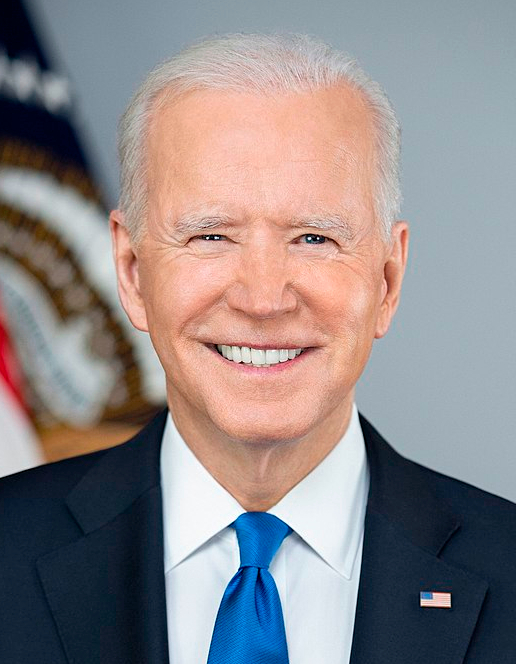

 European Union
European Union

 European Union
European Union
 Acting heads of government in the European Union
Acting heads of government in the European Union
 Giorgia Meloni
Giorgia Meloni
 Partei Europäische Konservative und Reformer
Partei Europäische Konservative und Reformer

 Party and government
Party and government

 Party and government
Party and government
 Group of Seven,G7
Group of Seven,G7

 Party and government
Party and government
 Group of the twenty most important industrial and emerging countries
Group of the twenty most important industrial and emerging countries
 President or Chairman
President or Chairman
 President or Chairman
President or Chairman
 Italien
Italien

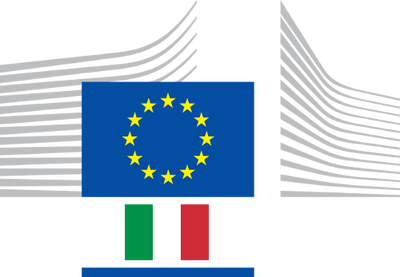




 History
History
 M 1500 - 2000 AD
M 1500 - 2000 AD

 History
History

 History
History

 History
History

 History
History
 N 2000 - 2100 AD
N 2000 - 2100 AD
 Japan
Japan

 Party and government
Party and government
 Group of the twenty most important industrial and emerging countries
Group of the twenty most important industrial and emerging countries

 Party and government
Party and government
 Group of Seven,G7
Group of Seven,G7
 Silk road
Silk road

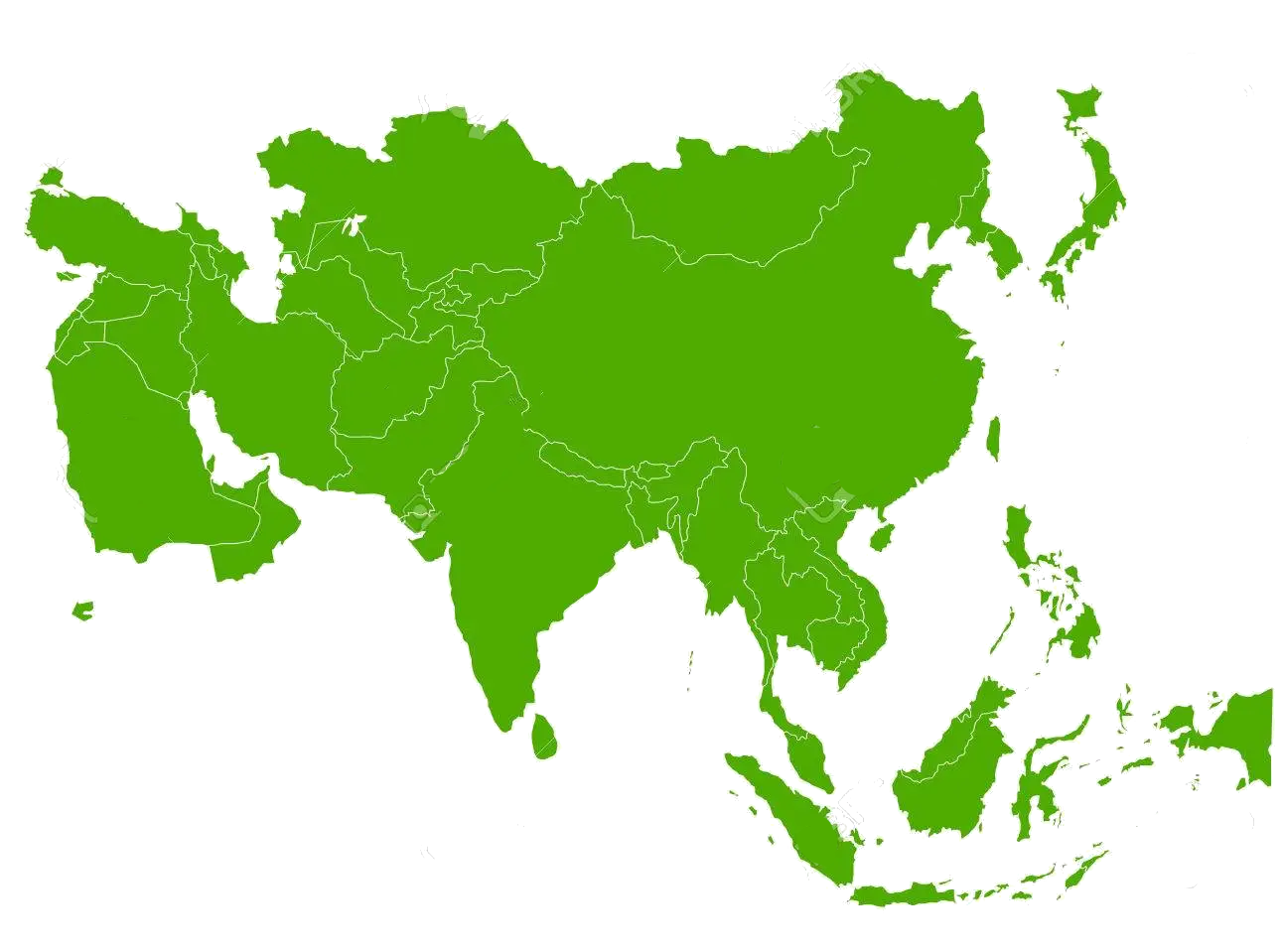 States of Asia
States of Asia
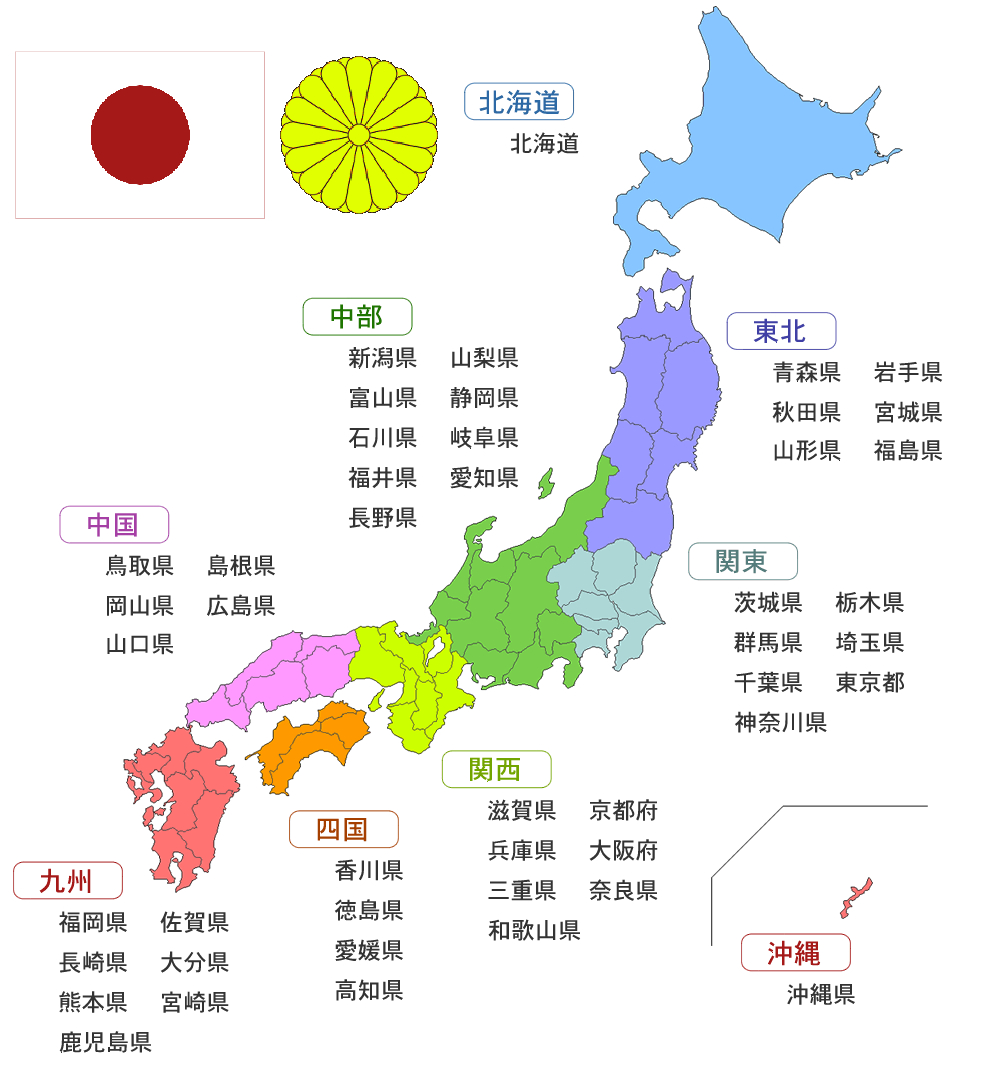
Japan (japanisch 日本, Nihon/Nippon; ) (amtlich: Staat Japan 日本国, Nihon-koku/Nippon-koku) ist ein 6852 Inseln umfassender ostasiatischer Staat im Pazifik, der indirekt im Norden an Russland, im Nordwesten an die Volksrepublik China, im Westen an Nordkorea und Südkorea und im Südwesten an die Republik China (Taiwan) grenzt und flächenmäßig der viertgrößte Inselstaat der Welt ist. De-facto-Hauptstadt und größte urbane Siedlung ist Tokio.
Die Bildung des japanischen Staatswesens begann im 5. Jahrhundert unter kulturellem Einfluss des chinesischen Kaiserreichs. Seit dem 16. Jahrhundert stand Japan im Kontakt mit dem Westen und stieg seit dem 19. Jahrhundert zur Großmacht auf, erwarb Kolonien wie Korea und Taiwan, nahm an beiden Weltkriegen teil und beherrschte kurzzeitig große Teile Südost- und Ostasiens. Das Japanische Kaiserreich war bis 1947 eine nach dem monarchischen Prinzip ausgerichtete, zum Teil an preußischem Vorbild angelehnte, konstitutionelle Monarchie mit dem japanischen Kaiser als Staatsoberhaupt. Damit zählte Japan zu einem der weltweit letzten Kaiserreiche. Seine aggressive Expansionspolitik in China im Vorfeld und während des Zweiten Weltkrieges (Pazifikkrieg) führte schließlich zur Niederlage an der Seite der Achsenmächte im August 1945. Im unter Douglas MacArthurs Besatzungsregierung gestalteten japanischen Staat seit 1947 ist der Souverän das Volk, höchstes Organ der Staatsgewalt das Parlament, dessen Kammern seither beide direkt vom Volk gewählt werden. Das Kaisertum wurde nicht abgeschafft, aber der Kaiser als „Symbol des Staates“ auf zeremonielle Aufgaben ohne eigenständige Autorität in Staatsangelegenheiten reduziert.
Japan wird zu den dichter besiedelten Ländern Asiens gezählt und liegt mit 127 Millionen Einwohnern auf Platz elf der bevölkerungsreichsten Länder der Erde. Die japanische Bevölkerung konzentriert sich überwiegend auf die vier Hauptinseln und besteht zu 99 % aus Japanern. Zu den Minderheiten gehören Koreaner, Chinesen und Filipinos. Seit den 2000er Jahren leben in Japan auch mehrere Tausend Gastarbeiter und Asylbewerber aus Afrika und anderen asiatischen Ländern. Die meisten Einwohner sind Anhänger des Shintoismus und Buddhismus.
Als historisch erste Industrienation Asiens hat Japan heute eine sehr hoch entwickelte Volkswirtschaft und war viele Jahre lang die weltweit zweitgrößte Wirtschaftskraft der Welt hinter den Vereinigten Staaten, mit denen es militärisch seit 1952 verbündet ist. Japan ist Mitglied der Gruppe der Sieben größten Industrienationen der Welt und der OECD. Japan nimmt in der Rangfolge gemäß dem Index der menschlichen Entwicklung der Vereinten Nationen den 17. Platz der 187 vom Index berücksichtigten Mitgliedstaaten der Vereinten Nationen ein.
日本国(日语:日本国/にっぽんこく、にほんこく Nippon-koku, Nihon-koku */?),通称日本,是位于东亚的岛屿国家,由日本列岛、琉球群岛和伊豆-小笠原群岛等6,852个岛屿组成[10],面积约37.8万平方公里[11]。国土全境被太平洋及鄂霍次克海、日本海、东海等缘海环抱,西邻朝鲜半岛及俄属远东,东北接千岛群岛,西南面台湾及中国大陆东部。人口达1.26亿[6],居于世界各国第11位,当中逾3,500万人居住于首都东京及周边数县构成的首都圈,为世界最大的都市圈[12]。政体施行议会制君主立宪制,君主天皇为国家与国民的象征,实际的政治权力则由国会、以及内阁总理大臣(首相)所领导的内阁掌管[13]。
传说日本于公元前660年2月11日建国[14],在公元4世纪出现首个统一政权,并于大化改新中确立了天皇的中央集权体制,文化上则深受中国隋唐两代之影响。12世纪后的六百年间,日本由幕府等数个武士阶级政权实际统治,期间包括了政治纷乱的南北朝与战国时代。17世纪起江户幕府颁布锁国令,至1854年被黑船迫以开港才结束。此后,日本在西方列强进逼的时局下,首先天皇从幕府手中收回政治实权,接着在19世纪中期的明治维新进行大规模政治与经济改革,引入欧洲的科学与技艺,日本的社会于是实现了工业化及现代化,施行天皇专权的君主立宪制,将北海道正式纳为领土;而自19世纪末起,日本开始进行对外扩张,首先并吞琉球,之后将台湾、朝鲜、库页岛等地纳为殖民地。进入20世纪时,日本已成为当时各国承认的帝国主义列强之一,也是当时东方世界唯一的大国。日本后来成为第二次世界大战的轴心国之一,但最终于1945年投降。败战后,日本在盟军主导下转型为以国会为中心的民主政体,天皇地位虚位化[13],同时依据新宪法放弃发动战争的权利,仅维持防御性的武装力量。
日本是世界第三大经济体,亦为七国集团成员,是世界先进国家之一,主要奠基于日本经济在二战后的巨幅增长。现时日本的科研能力、工业基础和制造业技术均位居世界前茅[15],并是世界第4大出口国和进口国[16]。2018年,日本的人均国内生产总值依国际汇率可兑换成为四万零八百美元,人均国民收入则在四万四千四百美元左右,人类发展指数亦在最高组群行列[17]。
日本国(にほんこく、にっぽんこく)、または日本(にほん、にっぽん)は、東アジアに位置する日本列島(北海道・本州・四国・九州の主要四島およびそれに付随する島々)及び、南西諸島・伊豆諸島・小笠原諸島などから成る島国[1][2]。議会制民主主義国家である。首都は東京都。 「日本」という漢字による国号の表記は、日本列島が中国大陸から見て東の果て、つまり「日の本(ひのもと)」に位置することに由来するのではないかとされる[3]。近代の二つの憲法の表題は、「日本国憲法」および「大日本帝国憲法」であるが、国号を「日本国」または「日本」と直接かつ明確に規定した法令は存在しない。[疑問点]ただし、日本工業規格 (Japanese Industrial Standard) では日本国、英語表記をJapanと規定。更に、国際規格 (ISO) では3文字略号をJPN、2文字略号をJPと規定している。また、日本国外務省から発給される旅券の表紙には「日本国」の表記と十六一重表菊[4] を提示している。法令で日本を指し示す表記には統一されておらず日本、日本国、本邦、わが国、などが混在している。
日本では、大和政権が統一以降に自国を「ヤマト」と称していたようであるが、古くから中国や朝鮮は日本を「倭」と呼んできた。石上神宮の七支刀の銘や、中国の歴史書(『前漢書』『三国志』『後漢書』『宋書』『隋書』など)や、高句麗の広開土王の碑文も、すべて倭、倭国、倭人、倭王、倭賊などと記している。そこで大和の代表者も、外交時には(5世紀の「倭の五王」のように)国書に「倭国王」と記すようになった[46]。
しかし中国との国交が約120年に渡って中絶した後、7世紀初期に再開された時には、『日本書紀』では「東の天皇が敬いて西の皇帝に白す」、『隋書』には「日出ずる処の天子、書を日没する処の天子に致す。恙無しや」とする国書を日本側が渡した記述があり、従来のように倭と称する事を避けている。中国側では『旧唐書』の「東夷伝」に初めて日本の名称が登場し、「日本国は倭国の別種なり。其の国、日の辺に在るを以ての故に、日本を以て名と為す」「或いは曰く、倭国自ら其の名の雅ならざるを悪(にく)み、改めて日本と為す」「或いは曰く、日本は旧(もと)小国、倭国の地を併す」のように、倭が名称を日本に変えた理由を説明している[47]。また、『新唐書』においては「国日出ずる所に近し、以に名をなす」とあり、隋書の「日出処天子」と共通している。
この7世紀には、遣隋使に続いて遣唐使がしばしば派遣されているが、いつから「倭」に変えて「日本」を国号と変えたのかは明らかでない[48]。使者の毎回の交渉について詳しく記述している『日本書紀』も、8世紀に国号としての日本が確立した後の書物であり、原資料にあった可能性のある「倭」の字を、国号に関する限りすべて「日本」と改めている。それ以外の文献では、733年(天平5年)に書かれた『海外国記』の逸文で、664年(天智3年)に太宰府へ来た唐の使者に「日本鎮西筑紫大将軍牒」とある書を与えたというが、真偽は不明である。結局確かなのは『続日本紀』における記述であり、702年(大宝2年)に32年ぶりで唐を訪れた遣唐使は、唐側が「大倭国」の使者として扱ったのに対し、「日本国使」と主張したという。『旧唐書』の「東夷伝」の記事も、この日本側の説明に基づいているようである[49]。
Japan (Japanese: 日本; Nippon [ɲippoɴ] or Nihon [ɲihoɴ]; formally 日本国 ![]() Nippon-koku or Nihon-koku, lit. "State of Japan") is an island country in East Asia. Located in the Pacific Ocean, it lies off the eastern coast of the Asian continent and stretches from the Sea of Okhotsk in the north to the East China Sea and the Philippine Sea in the south.
Nippon-koku or Nihon-koku, lit. "State of Japan") is an island country in East Asia. Located in the Pacific Ocean, it lies off the eastern coast of the Asian continent and stretches from the Sea of Okhotsk in the north to the East China Sea and the Philippine Sea in the south.
The kanji that make up Japan's name mean "sun origin", and it is often called the "Land of the Rising Sun". Japan is a stratovolcanic archipelago consisting of about 6,852 islands. The four largest are Honshu, Hokkaido, Kyushu, and Shikoku, which make up about ninety-seven percent of Japan's land area and often are referred to as home islands. The country is divided into 47 prefectures in eight regions, with Hokkaido being the northernmost prefecture and Okinawa being the southernmost one. The population of 127 million is the world's tenth largest, of which 98.5% are ethnic Japanese. 90.7% of people live in cities, while 9.3% live in the countryside.[16] About 13.8 million people live in Tokyo,[17] the capital of Japan. The Greater Tokyo Area is the most populous metropolitan area in the world with over 38 million people.[18]
Archaeological research indicates that Japan was inhabited as early as the Upper Paleolithic period. The first written mention of Japan is in Chinese history texts from the 1st century AD. Influence from other regions, mainly China, followed by periods of isolation, particularly from Western Europe, has characterized Japan's history.
From the 12th century until 1868, Japan was ruled by successive feudal military shōguns who ruled in the name of the Emperor. Japan entered into a long period of isolation in the early 17th century, which was ended in 1853 when a United States fleet pressured Japan to open to the West. After nearly two decades of internal conflict and insurrection, the Imperial Court regained its political power in 1868 through the help of several clans from Chōshū and Satsuma – and the Empire of Japan was established. In the late 19th and early 20th centuries, victories in the First Sino-Japanese War, the Russo-Japanese War and World War I allowed Japan to expand its empire during a period of increasing militarism. The Second Sino-Japanese War of 1937 expanded into part of World War II in 1941, which came to an end in 1945 following the Japanese surrender. Since adopting its revised constitution on May 3, 1947, during the occupation led by SCAP, the sovereign state of Japan has maintained a unitary parliamentary constitutional monarchy with an Emperor and an elected legislature called the National Diet.
Japan is a member of the ASEAN Plus mechanism, UN, the OECD, the G7, the G8, and the G20, and is considered a great power.[19][20][21] Its economy is the world's third-largest by nominal GDP and the fourth-largest by purchasing power parity. It is also the world's fourth-largest exporter and fourth-largest importer.
Japan benefits from a highly skilled and educated workforce; it has among the world's largest proportion of citizens holding a tertiary education degree.[22] Although it has officially renounced its right to declare war, Japan maintains a modern military with the world's eighth-largest military budget,[23] used for self-defense and peacekeeping roles; it ranked as the world's fourth most-powerful military in 2015.[24] Japan is a highly developed country with a very high standard of living and Human Development Index. Its population enjoys the highest life expectancy and third lowest infant mortality rate in the world, but is experiencing issues due to an aging population and low birthrate. Japan is renowned for its historical and extensive cinema, influential music industry, anime, video gaming, rich cuisine and its major contributions to science and modern technology.[25][26]
Le Japon, en forme longue l’État du Japon, en japonais Nihon ou Nippon (日本) et Nihon-koku ou Nippon-koku (日本国) respectivement, est un pays insulaire de l’Asie de l’Est, situé entre l’océan Pacifique et la mer du Japon, à l’est de la Chine, de la Corée et de la Russie, et au nord de Taïwan. Étymologiquement, les kanjis (caractères chinois) qui composent le nom du Japon signifient « pays (国, kuni) d’origine (本, hon) du Soleil (日, ni) » ; c’est ainsi que le Japon est désigné comme le « pays du soleil levant ».
Le Japon forme, depuis 1945, un archipel de 6 852 îles de plus de 100 m2, dont les quatre plus grandes sont Hokkaidō, Honshū, Shikoku, et Kyūshū représentant à elles seules 95 % de la superficie terrestre du pays. L’archipel s’étend sur plus de trois mille kilomètres. La plupart des îles sont montagneuses, parfois volcaniques ; par exemple, le plus haut sommet du Japon, le mont Fuji (3 776 m), est un volcan (inactif depuis 1707). Le Japon est le douzième pays le plus peuplé du monde, avec environ 127 millions d’habitants pour 377 488 km2 (337 hab./km2), dont l'essentiel est concentré sur les étroites plaines littorales du sud d'Honshū et du nord de Shikoku et Kyūshū, formant un ensemble pratiquement urbanisé en continu appelé « Mégalopole japonaise » ou « Taiheiyō Belt » (太平洋ベルト, Taiheiyō beruto, littéralement « ceinture Pacifique »). Le Grand Tokyo, qui comprend la capitale Tokyo et plusieurs préfectures environnantes, est la plus grande région métropolitaine du monde, avec plus de 35 millions d’habitants. La ville a été première place financière mondiale en 1990.
Les recherches archéologiques démontrent que le Japon était peuplé dès la période du Paléolithique supérieur. Les premières mentions écrites du Japon sont de brèves apparitions dans des textes de l’histoire chinoise du Ier siècle. L’histoire du Japon est caractérisée par des périodes de grande influence dans le monde extérieur suivies par de longues périodes d’isolement. Depuis l’adoption de sa constitution en 1947, le Japon a maintenu une monarchie constitutionnelle avec un empereur et un parlement élu, la Diète.
Le Japon est la troisième puissance économique du monde pour le PIB nominal et la quatrième pour le PIB à parité de pouvoir d’achat. Il est aussi le quatrième pays exportateur et le sixième pays importateur au monde. Acteur majeur du commerce international et puissance épargnante, il a ainsi accumulé une position créancière nette vis-a-vis du reste du monde (en) de plus de 325 000 milliards de yens4, le plaçant en première position devant la Chine5. C’est un pays développé, avec un niveau de vie très élevé (dix-septième IDH le plus élevé) et la plus longue espérance de vie au monde selon les estimations de l’ONU6. Mais ce tableau idyllique ne doit pas masquer d’importants problèmes qui pèsent sur l’avenir du pays : le Japon souffre d’un des taux de natalité les plus bas du monde, très en dessous du seuil de renouvellement des générations7. Le pays est actuellement en déclin démographique8. C’est également le pays pour lequel le poids de la dette publique brute est le plus important au monde9, cette dernière s’élève en 2014 à 233 % du PIB10.
Il Giappone (AFI: [ʤapˈpoːne][6][7]; in giapponese 日本 Nihon? o Nippon?, ufficialmente 日本国 Nihon-koku? o Nippon-koku?) è uno Stato insulare dell'Asia orientale.
Situato nell'oceano Pacifico, il Giappone si trova a est del mar del Giappone, Cina, Corea del Nord, Corea del Sud e Russia. Si sviluppa nell'area compresa tra il mare di Ochotsk nel nord, fino al mar Cinese Orientale e Taiwan nel sud. Il Giappone è un arcipelago composto da 6.852 isole, le cui quattro isole più grandi sono: Honshū, Hokkaidō, Kyūshū e Shikoku (tutte e quattro collegate tramite ponti o tunnel sottomarini), che da sole rappresentano circa il 97% della superficie terrestre del Giappone. Molte isole sono montagne, alcune di origine vulcanica e la vetta più alta del Giappone è il Monte Fuji, un vulcano attivo.&

